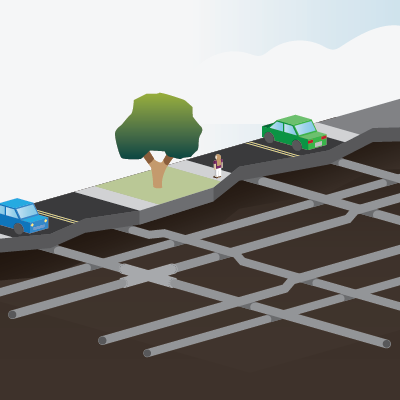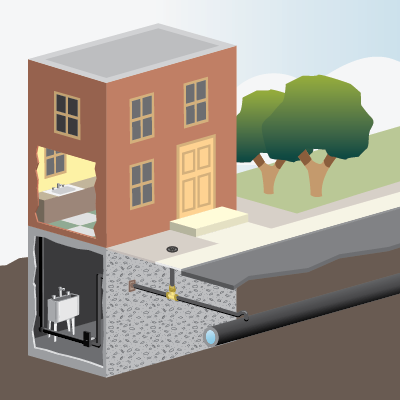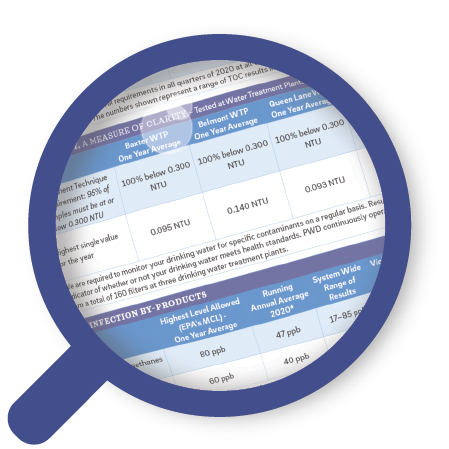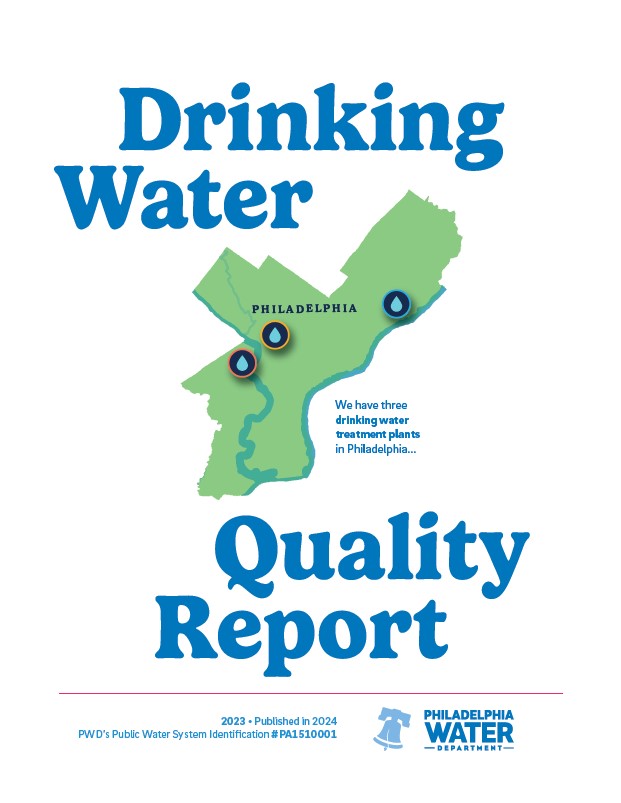Drinking Water
Quality Report
We have three drinking water treatment plants in Philadelphia…
2023 • Published in 2024
PWD’s Public Water System Identification # PA1510001
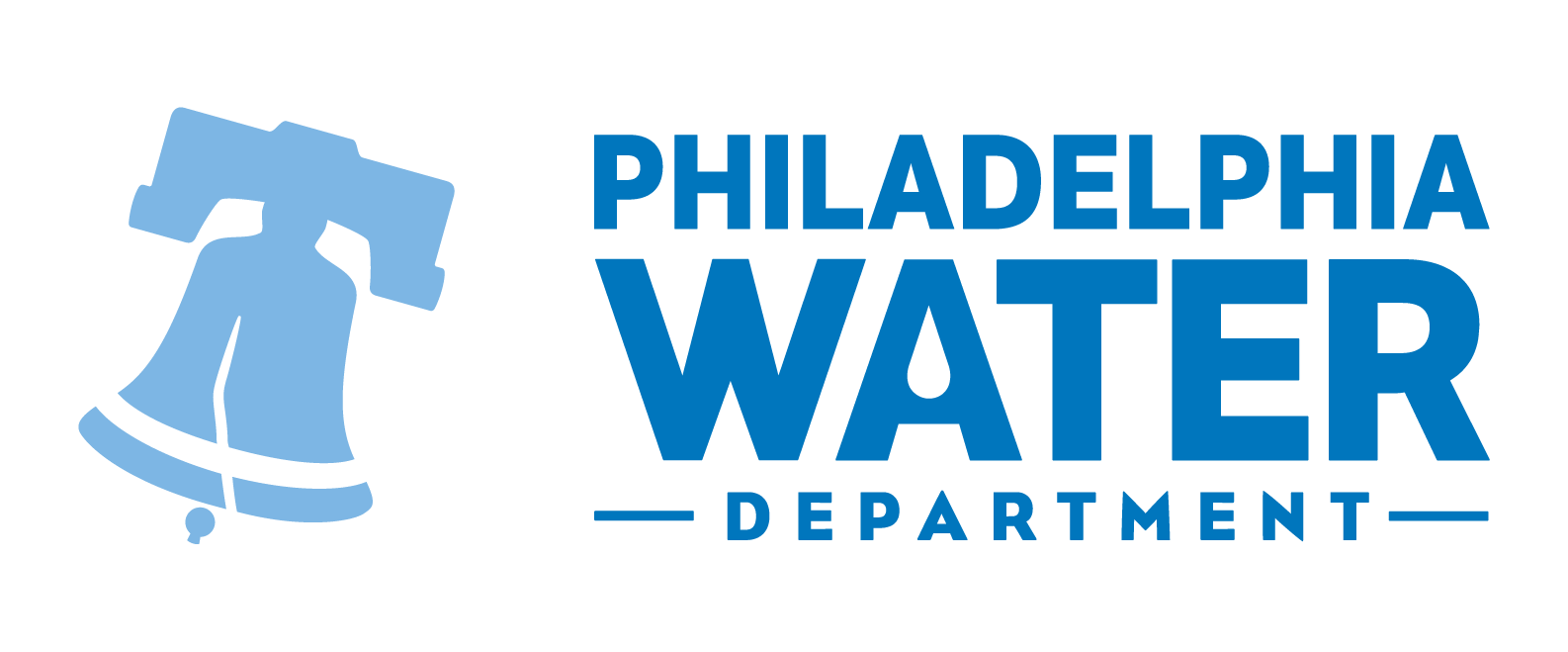
…But our water quality story is bigger than our borders.

A message from the Commissioner
Top-quality water means protection from source to tap.
Since upstream threats can impact drinking water downstream, our staff members are dedicated to safeguarding these source waters.
On water’s journey to you, we utilize technology like the Delaware Valley Early Warning System, test for potential threats like Per- and poly-fluoroalkyl substances (PFAS), and partner with upstream organizations to monitor other possible concerns.
Though, we’re doing significant work today, we’re also planning for tomorrow…
The new 25-year Water Revitalization Plan will allow us to continue to provide safe and reliable drinking water for the next generation. The plan will ensure system-wide resiliency for a range of emergency conditions.
In light of recent PFAS regulations set by the EPA, we’re in the planning and piloting phases to upgrade treatment plants with top, cost-effective technologies to meet these federal regulations when they begin.
Additionally, we’re working to identify lead sources and remove lead from plumbing in properties across the city. Due to updated Federal and State regulations, PWD is piloting free tests of water samples at schools and childcare facilities.
For Philadelphia Water Department staff, this work spills beyond our professions. Every day, our employees drink the water we deliver to our customers.
We know the importance of clean tap water you can trust.
Sincerely,

Randy E. Hayman, Esq.
Water Commissioner

Belmont Drinking Water Treatment Plant

Queen Lane Drinking Water Treatment Plant

Baxter Drinking Water Treatment Plant
Water treatment operations began on these sites over 100 years ago. Many of the current buildings that comprise our treatment plants were built over 60 years ago, dating to the 1950s and 60s.
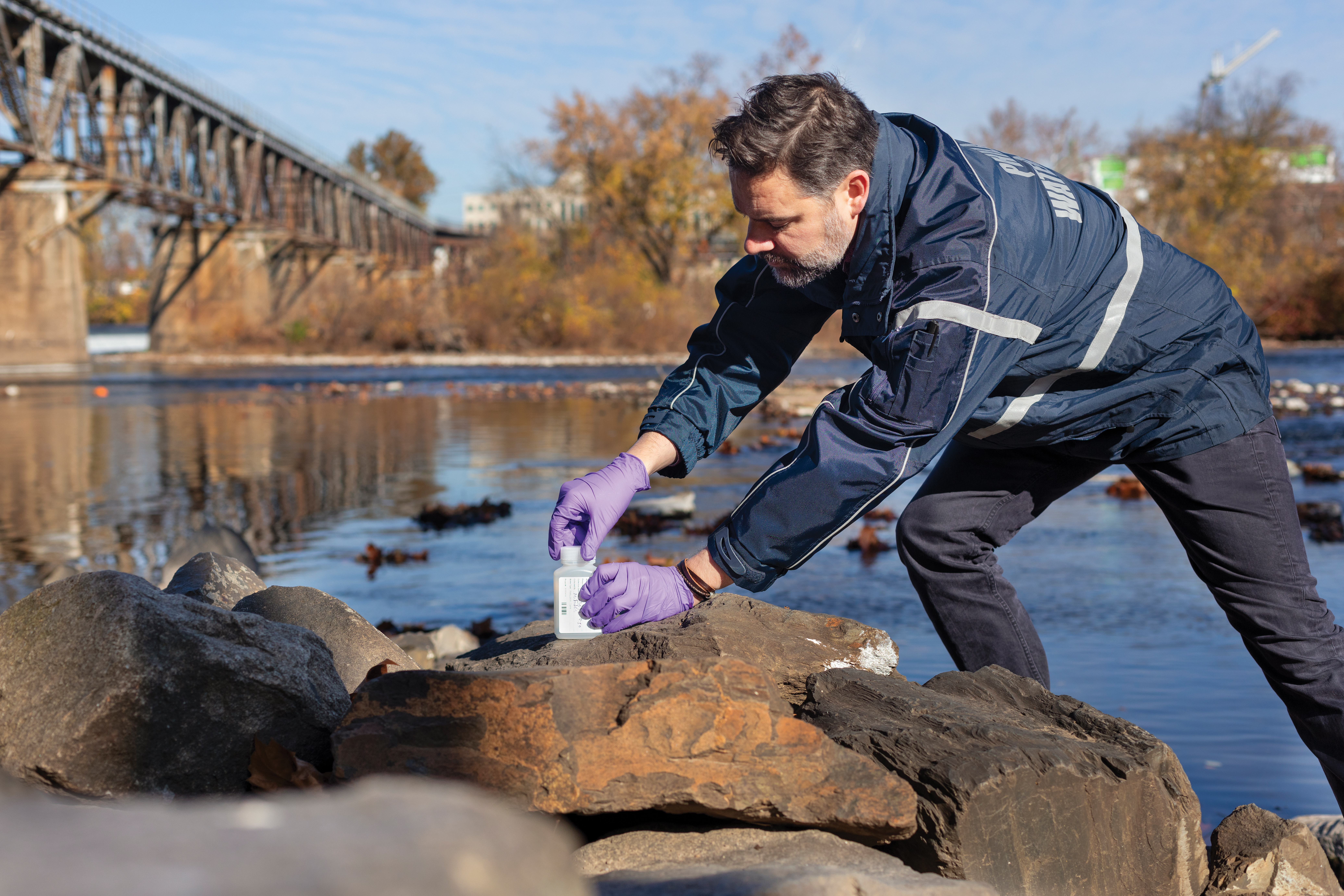
Monitoring source water to promote health and safety
We study PFAS and other potentially harmful chemicals from industry in the region.
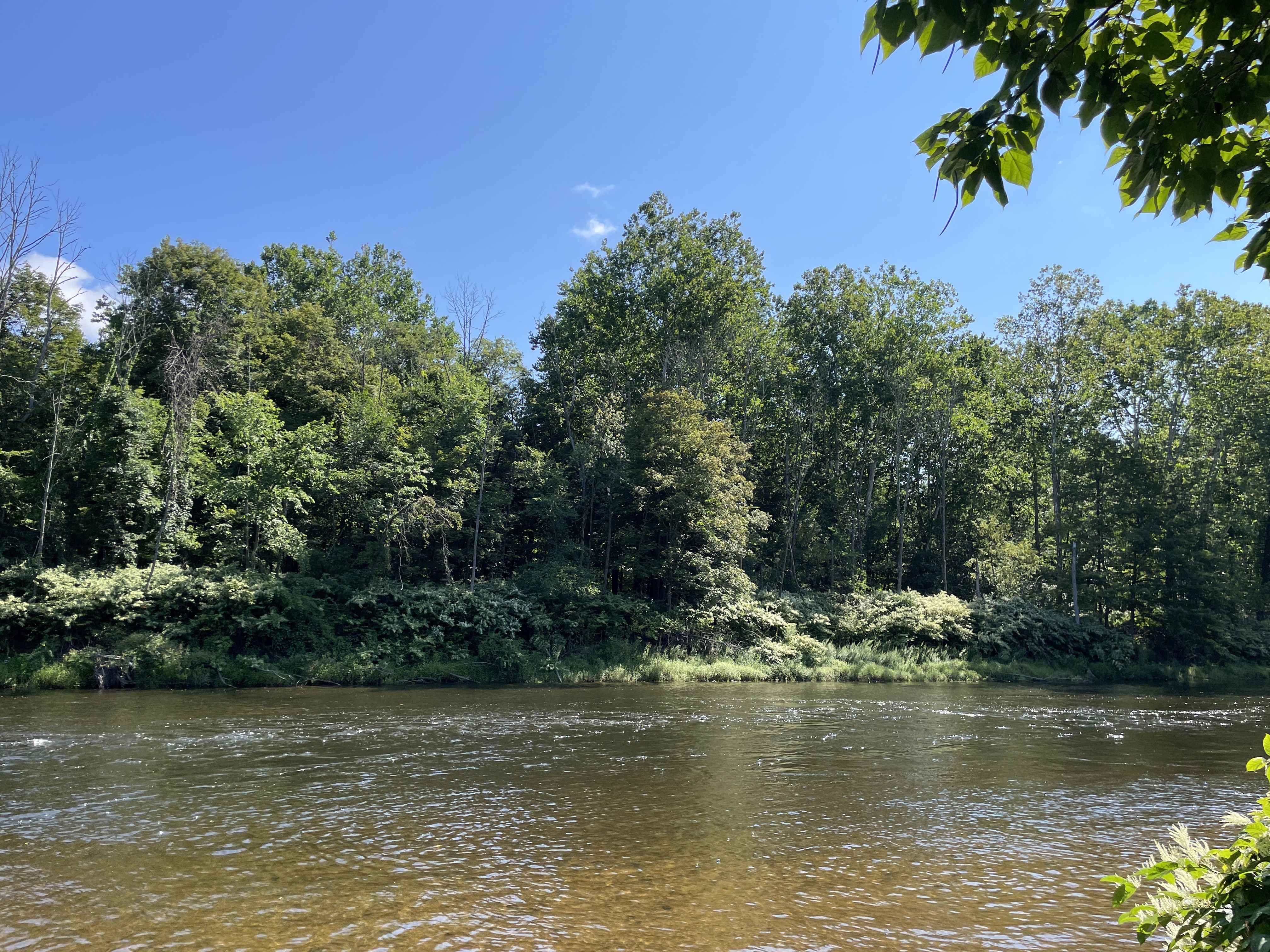
Reducing emergency response times
The Delaware Valley Early Warning System is a web-based tool keeping our source waters safe.

High-quality staff, high-quality results
The experts working at our treatment plants take pride in using water drawn from our local rivers. Hundreds of millions of gallons of top-quality drinking water are produced every day.
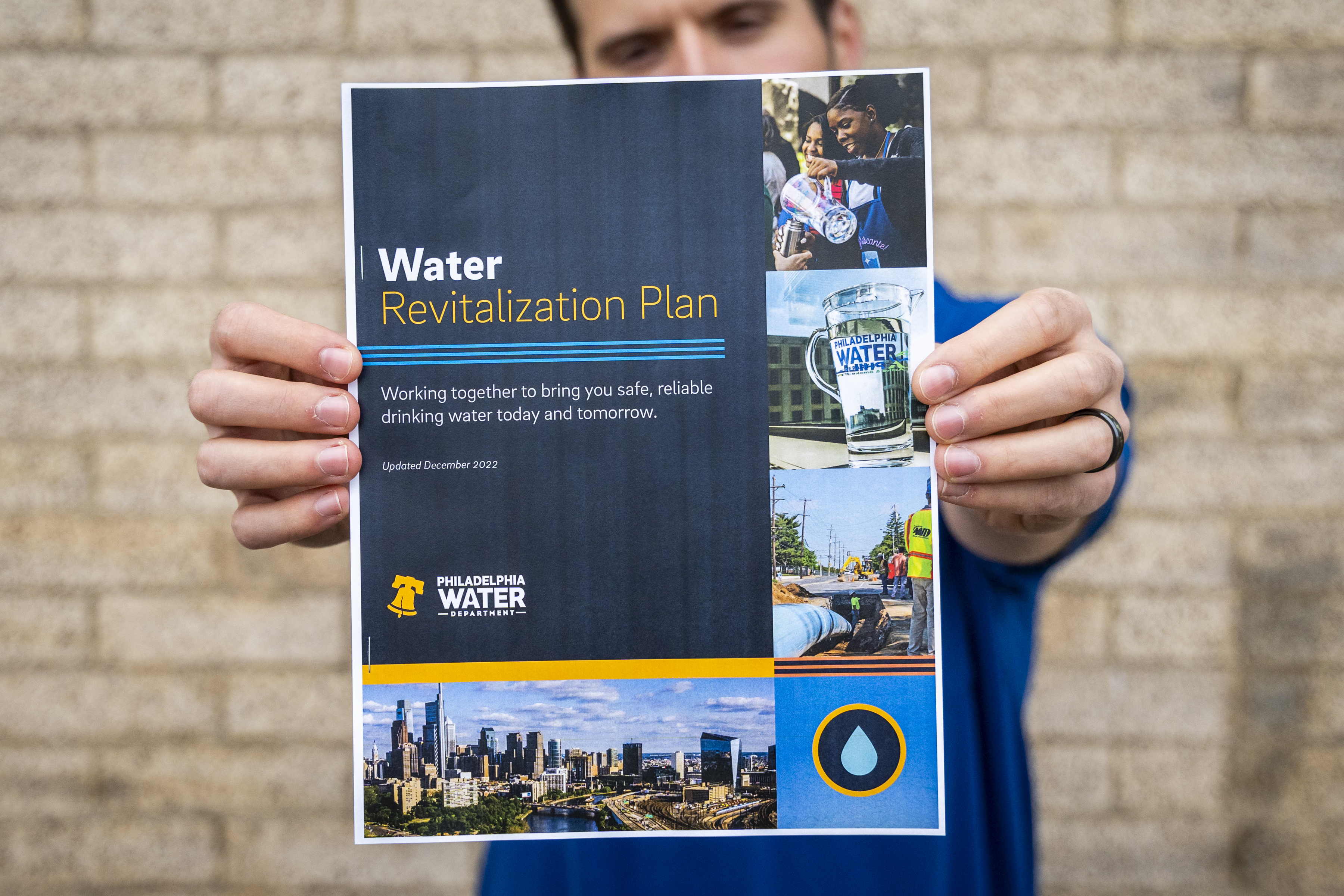
Redundancy from both rivers, a once-in-a-generation investment
The Water Revitalization Plan allows us to create a drinking water system that can respond to events like natural disasters or emergencies.
Table of Contents
Look for these quick guides throughout the report:
A Closer Look 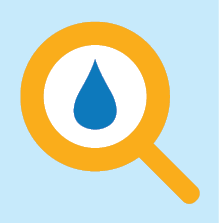

Charts and graphs let you see the data in a new way.
Here’s the story of why we do this test
Handwritten notes explain how and why we do these tests.
☑RESULT:
All results are better than the recommended federal levels.
Look here for key takeaways.
Contact Information
Philadelphia Water Department
1101 Market St.
Philadelphia, PA 190107
Public Water System ID #PA1510001
Brian Rademaekers
Public Information Officer, Public Affairs
(215) 380-9327
Sharing this report
Please share this report with all people who drink this water, especially those who may not have received this notice directly (for example, people in apartments, nursing homes, schools and businesses). You can do this by posting this notice in a public place or distributing copies by hand and mail.
To receive a printed copy of this report, please email: waterquality@phila.gov
People with special health concerns
Some people may be more vulnerable to contaminants in drinking water than the general population. Immunocompromised persons, such as persons with cancer undergoing chemotherapy, persons who have undergone organ transplants, people with HIV/AIDS and other immune system disorders, and some elderly people and infants can be particularly at risk from infections.
These people should seek advice about drinking water from their health care providers.
U.S. Environmental Protection Agency (EPA)/Centers for Disease Control (CDC) guidelines on appropriate means to lessen the risk of drinking water contaminants are available from the Safe Drinking Water Hotline: (800) 426-4791.
1
Source & treatment
Your water begins in freshwater streams
Philadelphia’s water comes from the Delaware River Watershed. The watershed begins in New York State and extends 330 miles south to the mouth of the Delaware Bay. The Schuylkill River is part of the Delaware River Watershed.
Protection starts at the sources
We take a holistic approach, beginning with Philadelphia’s water supply. We monitor waterways across the watershed and look for potential sources of contamination. We keep track of water availability and flow.
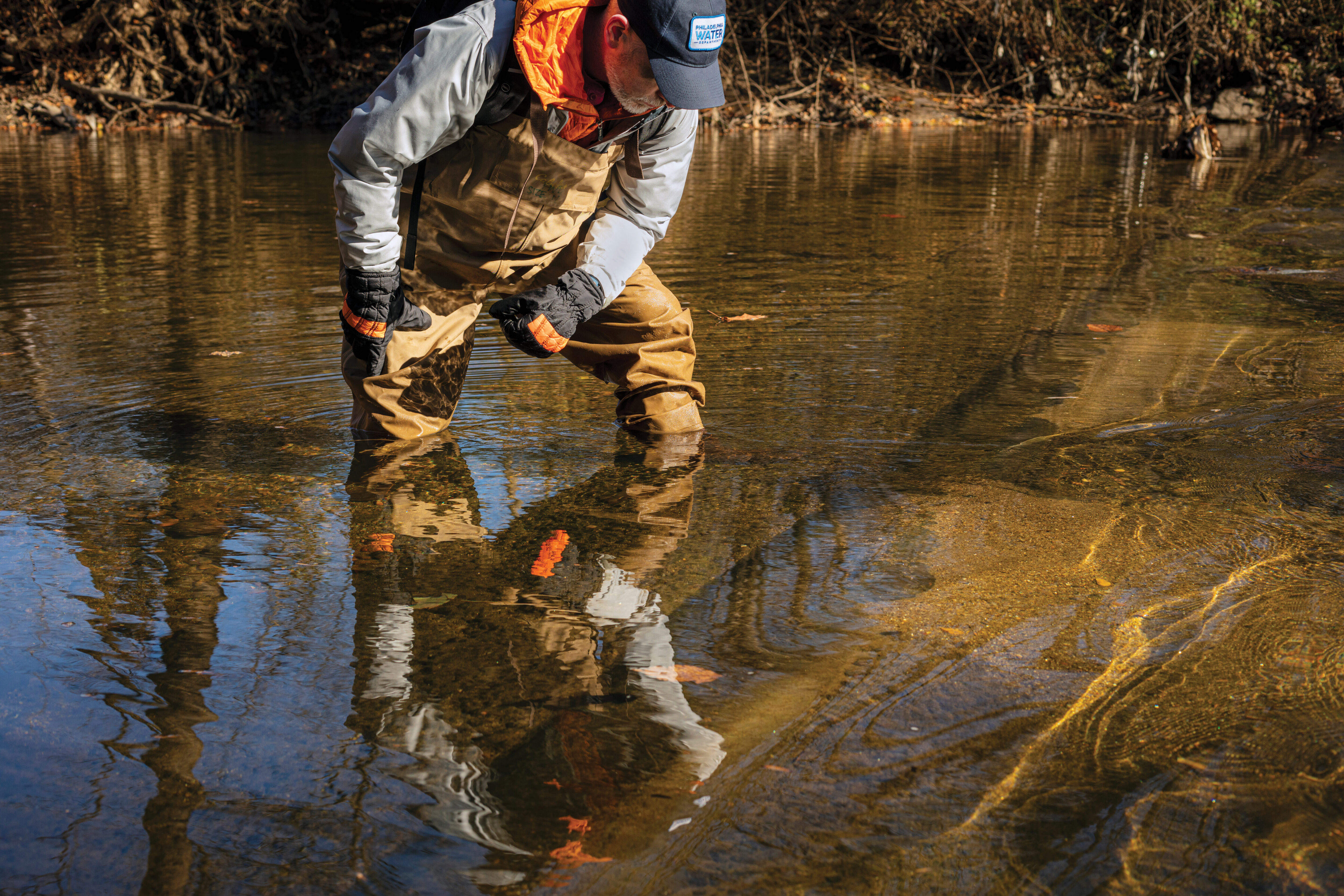
Our wide range of tools for protecting water sources includes:
Research
- We study regional influences, such as natural gas drilling, and global influences like sea level rise.
Projects in the field
- We protect against stormwater and agricultural runoff.
- We monitor water contaminants.
Partnerships
- We team up with organizations across the region to protect our entire watershed.
Philadelphia source watersheds
Delaware River Watershed
Schuylkill River Watershed
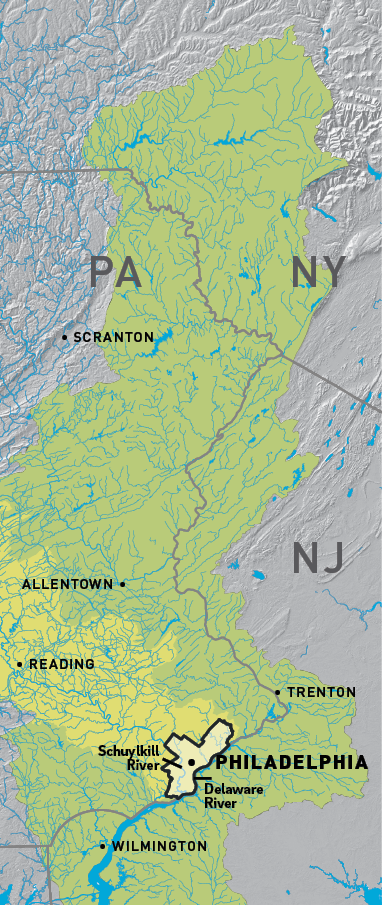
Monitoring source water to promote health and safety
We protect our rivers from threats and pollution sources locally and beyond the City limits.
Per- and polyfluoroalkyl substances (PFAS) are a family of industrial chemicals. There are more than 9,000 different types that have been used for decades in various products, such as frying pans and cosmetics. These substances do not break down easily or quickly, so they’re sometimes called “forever chemicals.”
Exposure over time to certain types of PFAS substances can have effects on human health.
Philadelphia’s drinking water meets all current state and federal regulations for PFAS – and we support all upcoming federal regulations.
We are already piloting ways to address upcoming, stricter regulations. PWD is planning to upgrade our drinking water treatment plants with the best technologies to protect our water quality.
Planning for today and tomorrow
⮝ Routine testing for PFAS
We collect samples upstream and within the city’s waterways. We also test the finished, treated water sent to homes and business across the City.
Small-scale labs ⮞
Inside a container about the size of a trailer, PWD scientists test the methods planned for upgraded treatment plants.
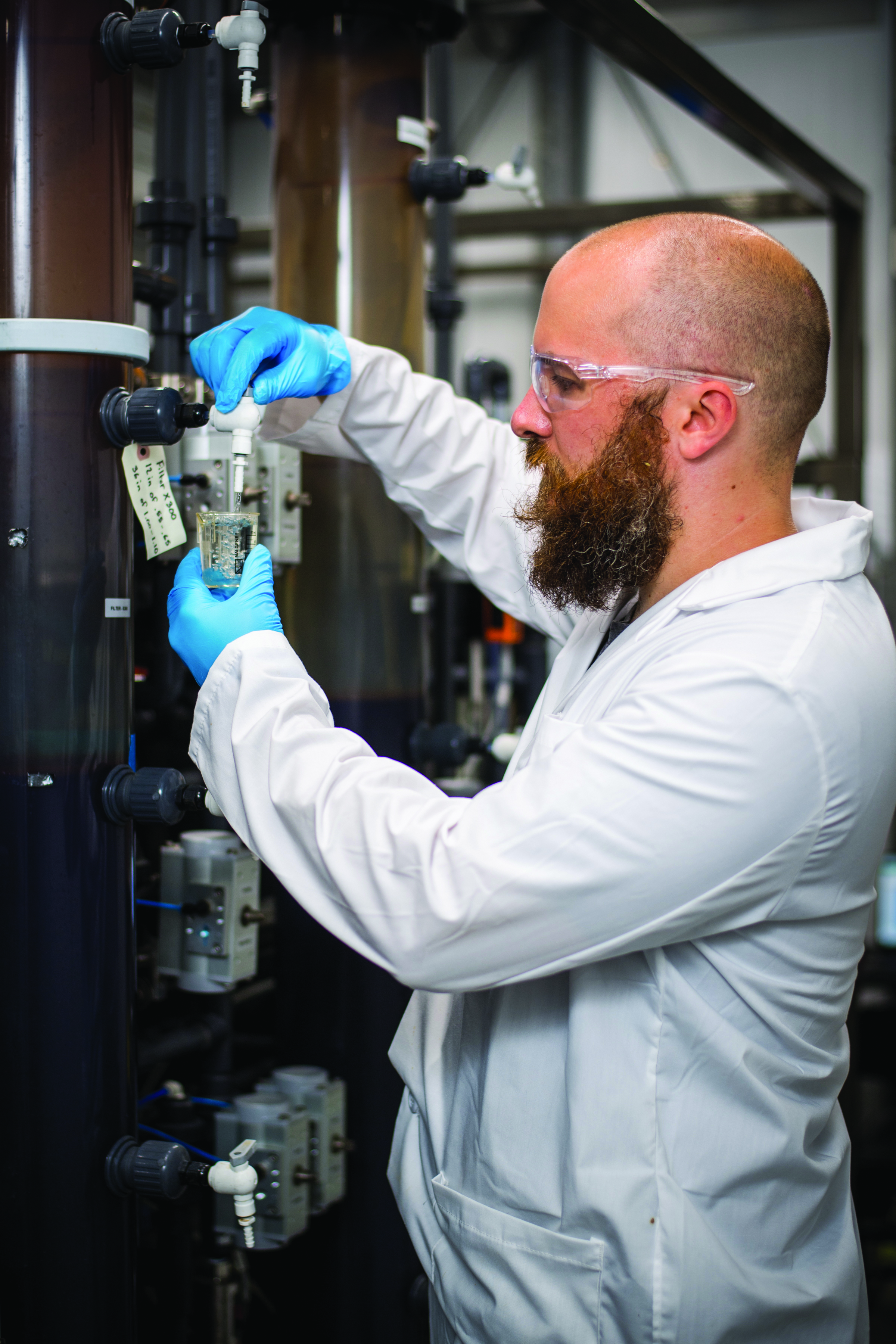

Spotlight:
Delaware Valley Early Warning System (EWS)
Reducing emergency response times by communicating across the area.
Our drinking water is a resource shared by millions of people in towns and cities across the region. The Delaware Valley Early Warning System (EWS) protects drinking water by providing rapid notifications to organizations and utilities like PWD.
The web-based emergency communication system reports events like truck and freight accidents and chemical spills that may impact our source water.
Drinking Water Treatment Plants
An important early step in water’s journey.
We have three drinking water treatment plants.
Baxter pulls water from the Delaware River. Queen Lane and Belmont pull from the Schuylkill.
Each plant has a service area. Some areas in Philadelphia can receive a mix from multiple treatment plants.
Use this map or enter your address to see where your water is treated:
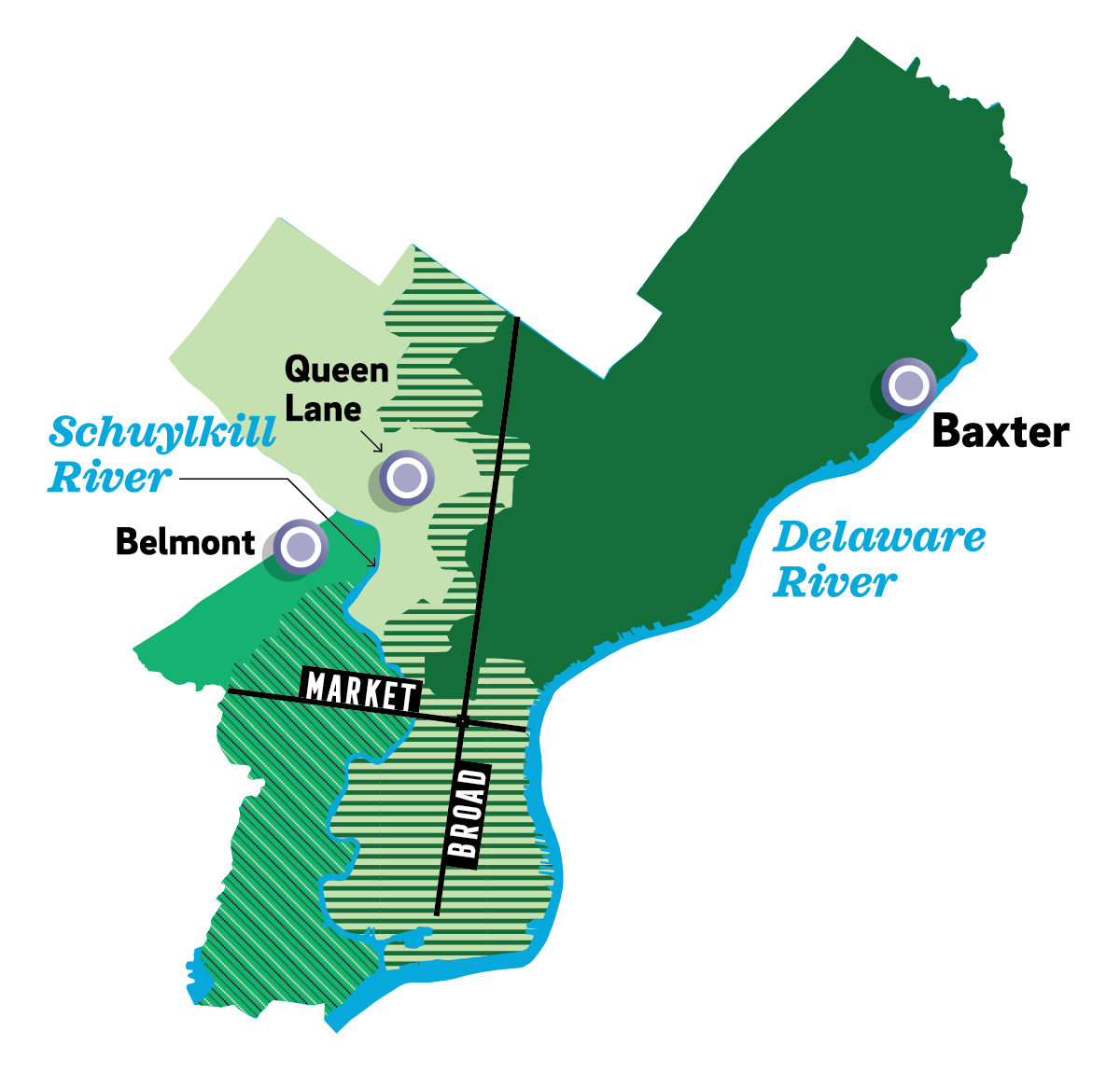
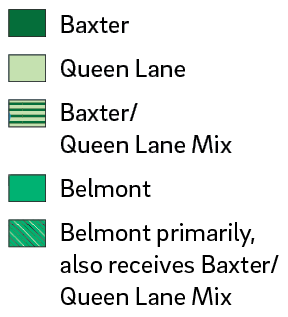
Note: This map reflects typical day‑to‑day operations.
Areas receiving a mix may be altered in emergency situations.
Typical Treatment Processes
These are some of the stages water goes through during normal operating conditions.
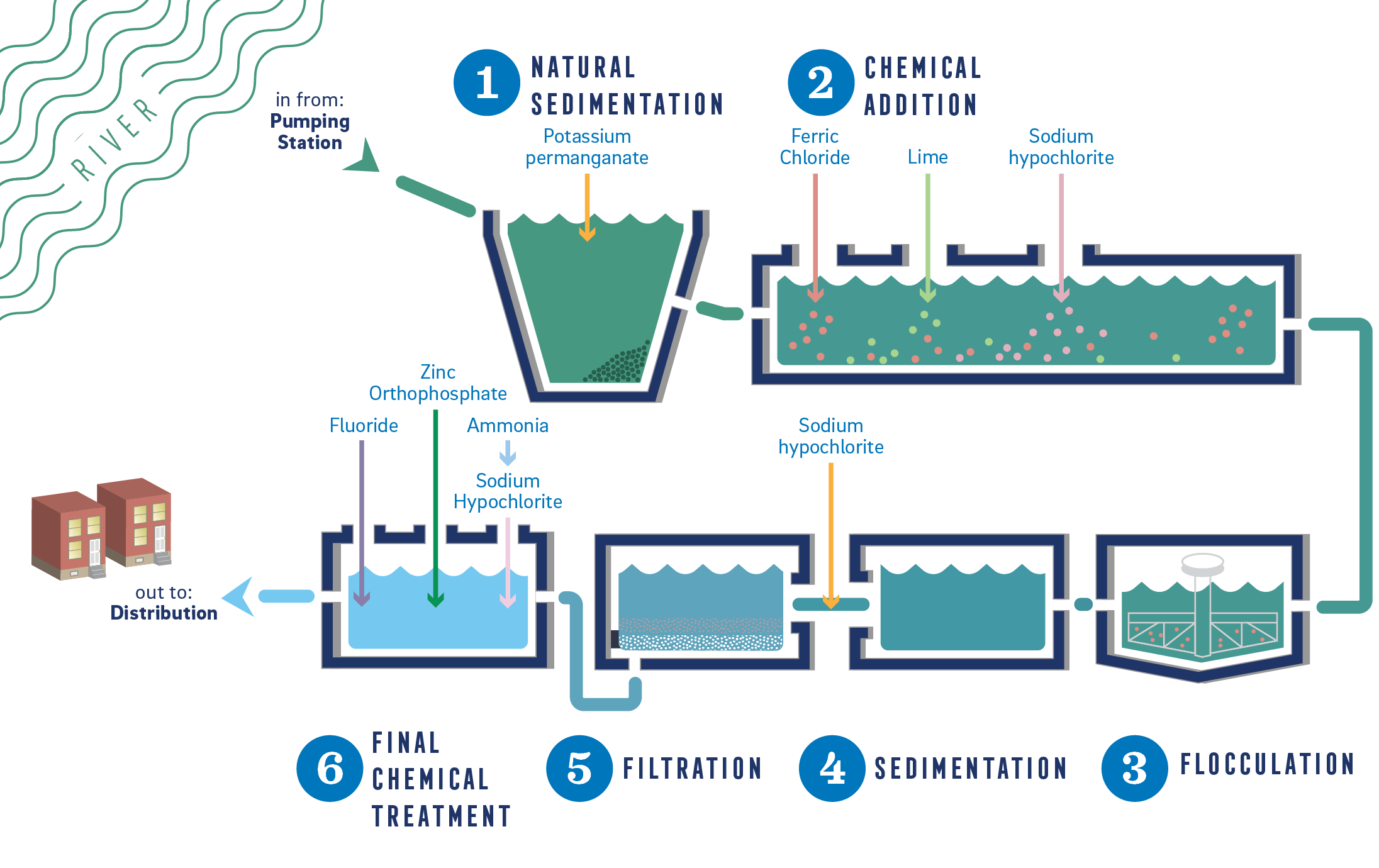
Before water leaves the plant
We test our treated water for about 100 regulated contaminants, ranging from organisms like bacteria to chemicals like nitrate.
In 2023, we found no violations under state and federal regulations.
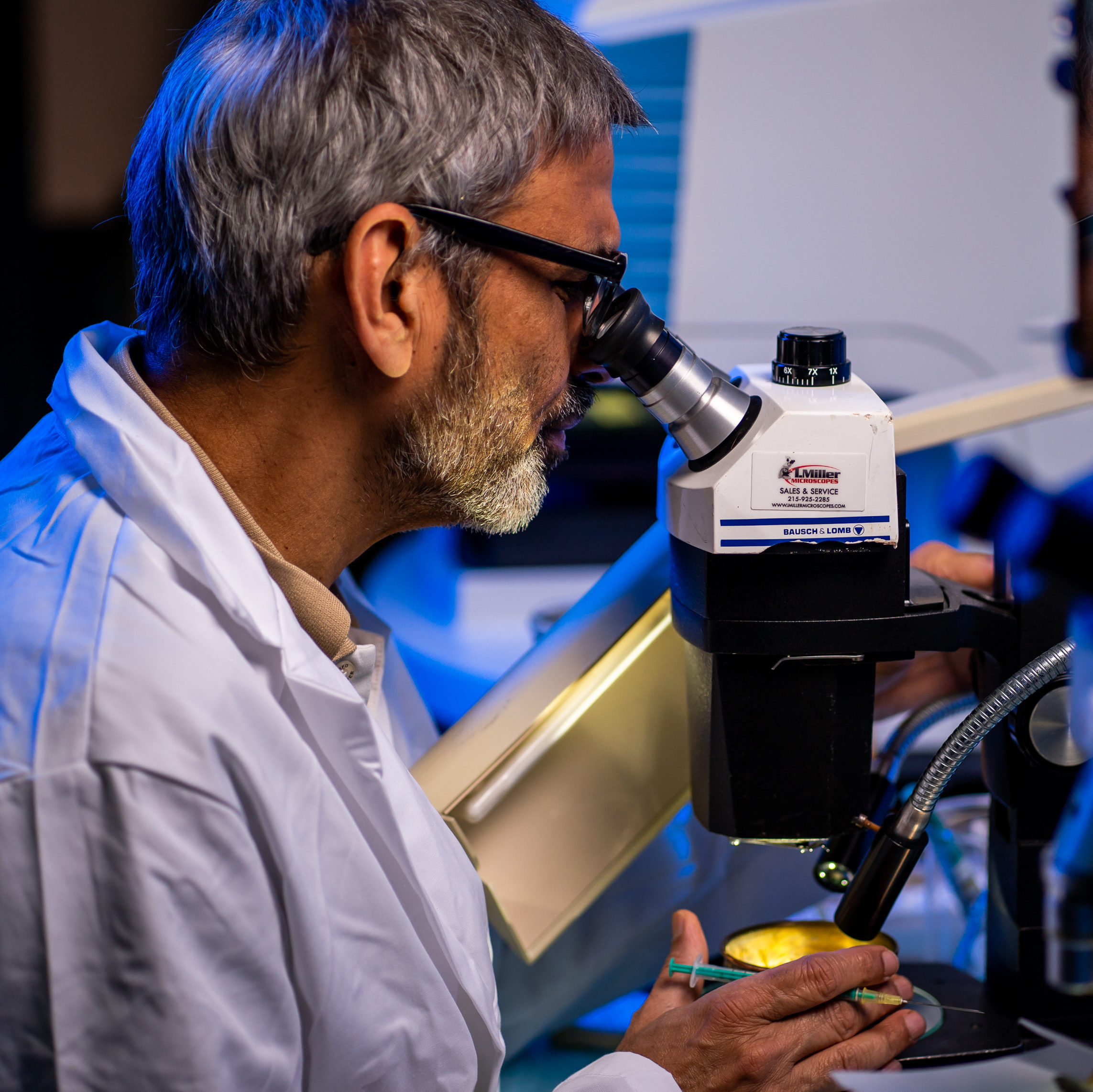
Final touches
Chlorine + Ammonia
Chlorine protects us from organisms found in untreated water that can cause disease. Ammonia is added to make the chlorine last longer and reduce the bleach-like smell.
Fluoride
All water contains some fluoride. We adjust the natural levels slightly to help protect your teeth against decay.
Zinc orthophosphate
Zinc orthophosphate is a compound that helps form a protective coating on pipes. It prevents corrosion (or breaking down over time).
A Closer Look 
Turbidity
Turbidity is a measurement of cloudiness from particles. A high turbidity reading means there are a lot of particles in the water. They could be sand, silt, or organic particles.
We monitor turbidity because it is a good indicator of the effectiveness of our filtration system.
Good to know: Turbidity is different from the cloudiness you sometimes see when air bubbles are trapped in your tap water. Air bubbles usually disappear after a few minutes.
How we test for turbidity

In turbid water, light shines into water and bounces off particles.
In clear water, light passes directly through to the detector.
2023 Average Results
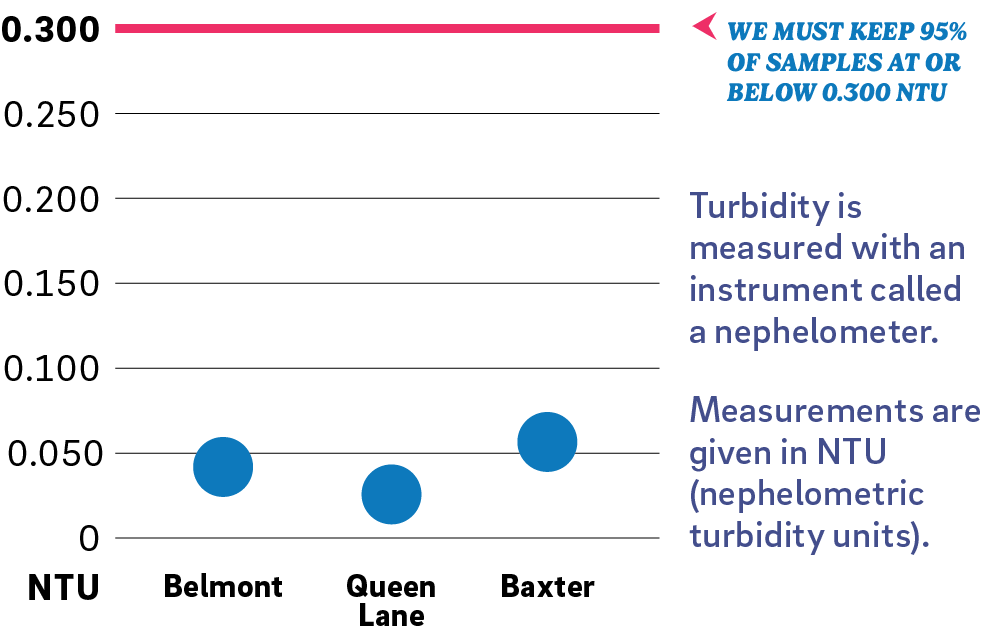
What this means for you
Why can high turbidity lead to a drinking water warning?
Turbidity itself has no health effects. However, it can interfere with disinfection. If we can’t measure turbidity during disinfection, we can’t be sure the process has worked properly.
☑Result:
Our water samples are consistently less turbid than limits set by the EPA.
2
Delivery
A safe path through the system
We have about 3,100 miles of water mains that deliver clean tap to customers. To ensure water stays safe as it moves from the plant to you, we take samples and monitor real-time water quality data, 24/7.
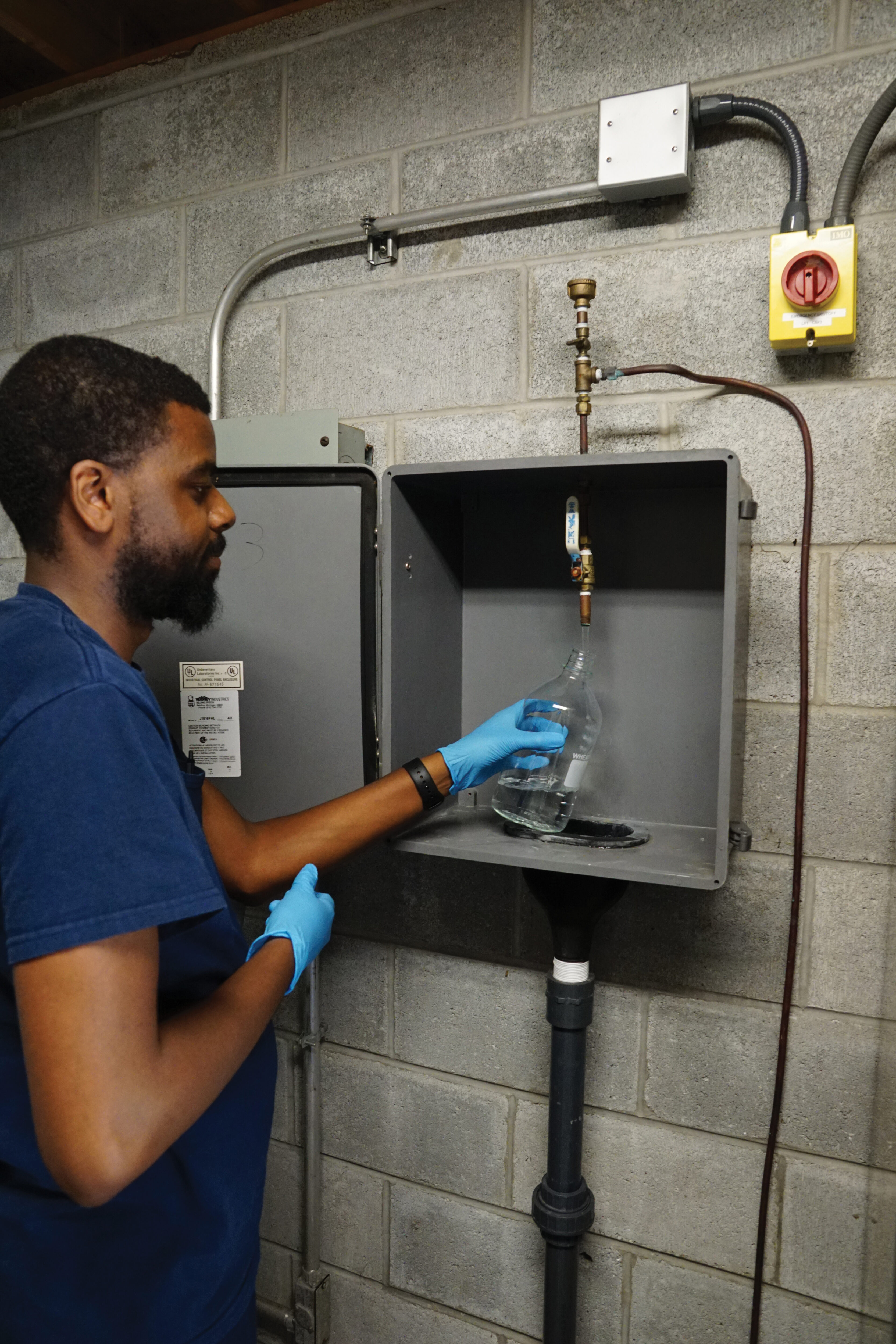
A Closer Look 
Residual Chlorine
This test is done throughout the system. It checks that the chlorine added at plants remains at levels that keep water fresh and safe while staying within regulations.
Most recent results
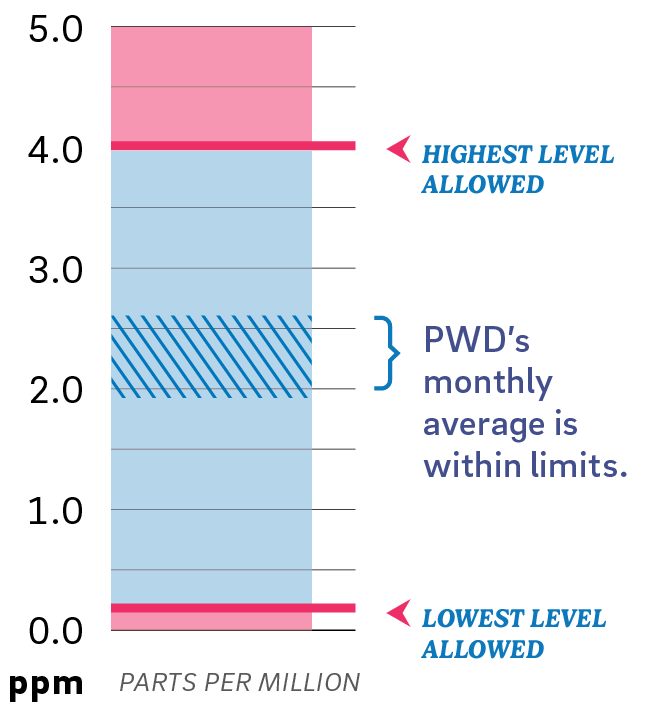
What this means for you
We travel the city to collect samples of drinking water from fire and police stations, pumping stations, and more.
We do over 400 of these tests every month!
☑Result:
Better than standards.
Spotlight:

Upgrading our infrastructure
The Water Revitalization Plan (WRP) is our 25-year plan to strengthen essential drinking water infrastructure.
What will revitalization mean for Philadelphians?
It means improving water infrastructure: the pipes, treatment plants, facilities, and processes we rely on for safe water in every neighborhood.
We need to do this work now to be ready for the changes facing our city, including more severe storms and an aging system.
An ambitious approach
The Water Revitalization Plan identified approximately 400 projects focused on the improvement of existing facilities and the construction of several new facilities.
Key projects include:
- Schuylkill River Crossing (Transmission piping)
- Baxter Drinking Water Treatment Plant Upgrade
- Belmont Drinking Water Treatment Plant Upgrade
- Queen Lane Drinking Water Treatment Plant Upgrade
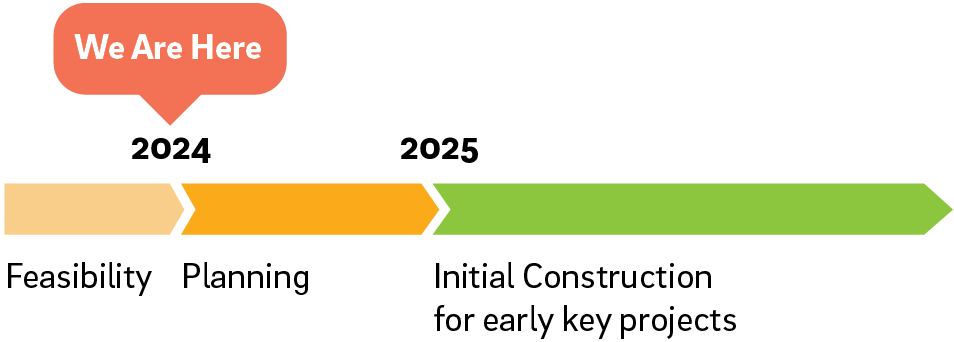
Why are we doing this now?
The City is facing a challenge similar to other large cities across the country: the need to update aging infrastructure.
The facilities you rely on for safe water are in need of major upgrades. Without these improvements, we’ll likely experience more unplanned repairs, which could be costly and disruptive for residents.
Tapping into the community
The WRP Stakeholder Advisory Group is comprised of community members with a vested interest in projects related to the WRP.
PWD is hosting regular community listening sessions both virtually and in-person around the city to inform Philadelphians about the plan.
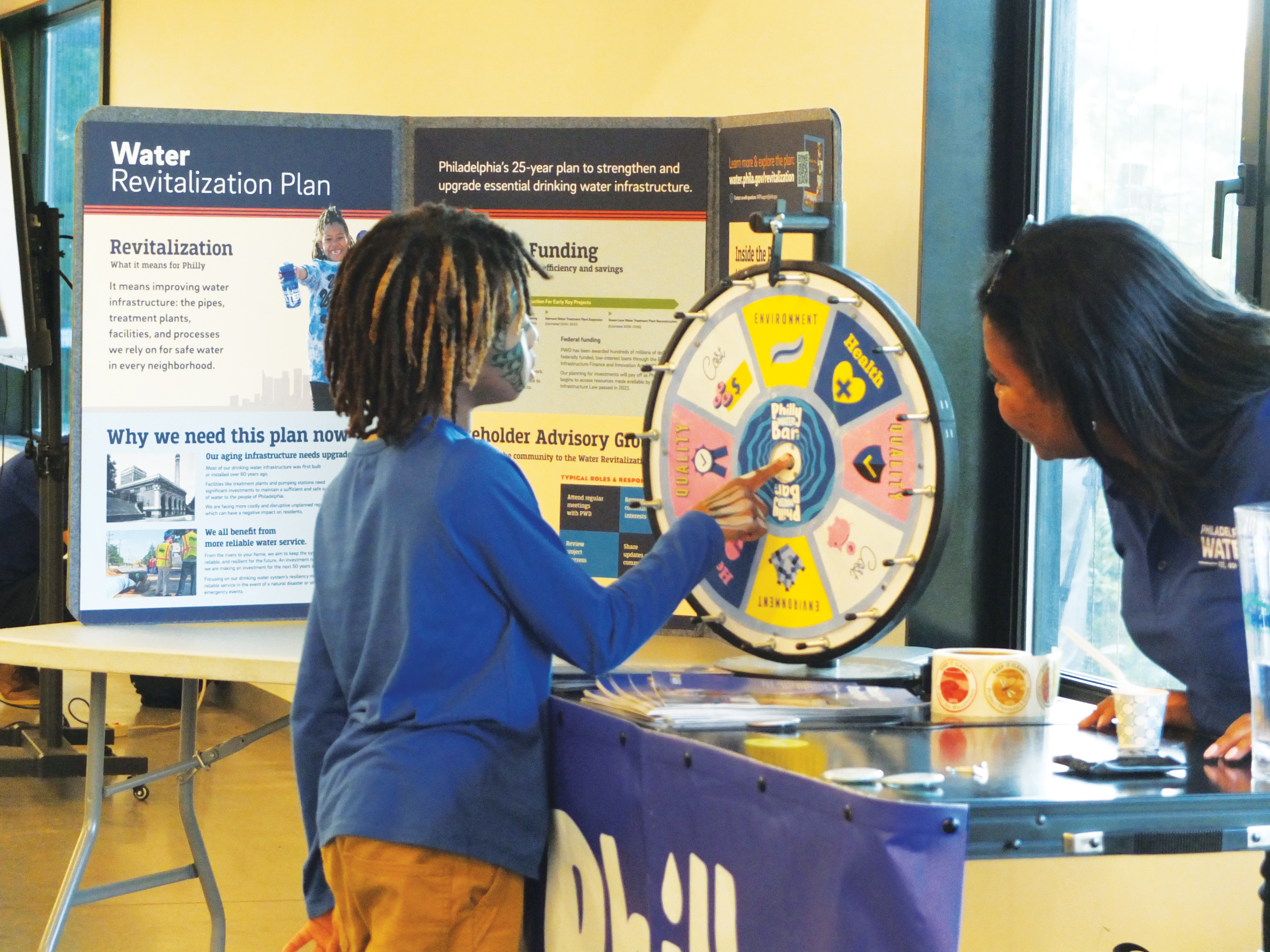
Sign up to receive project news & learn how you can get involved.
3
At your taps
Water where you live, work, and play
When water leaves a water main, it enters a property’s service line. From there, the property’s plumbing system carries water to the taps or fixtures we use every day at home, school, or work.

1 in 3
Approximate number of customers who don’t trust the pipes in their home.
Our most recent annual Customer Survey shows 37% of customers don’t trust their pipes at home. Flushing (see the next section) is an excellent way to trust your tap water!
Source: 2023 Comprehensive Survey Report
We hear you!
Thanks to customer surveys and neighborhood events like the Philly Water Bar, we hear loud and clear from the people of Philadelphia:
Safe drinking water is a top priority for our customers.

Does your tap water appear cloudy?
This is usually not a water quality issue. Water pressure in the main creates air bubbles in water. When you fill a glass with tap water, the bubbles rise from the bottom of the glass and are released at the top.
Call us to report a water quality issue if the bubbles don’t disappear after a few seconds.
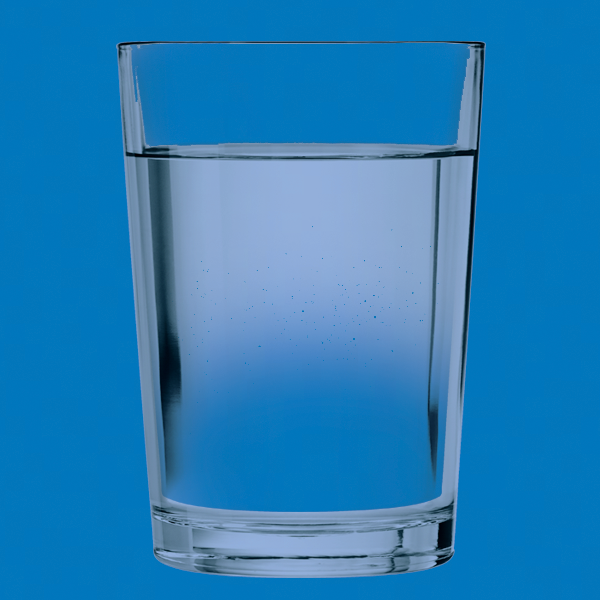
Meet your service line
The service line is the pipe that carries clean water into your property from the city’s network of water mains.
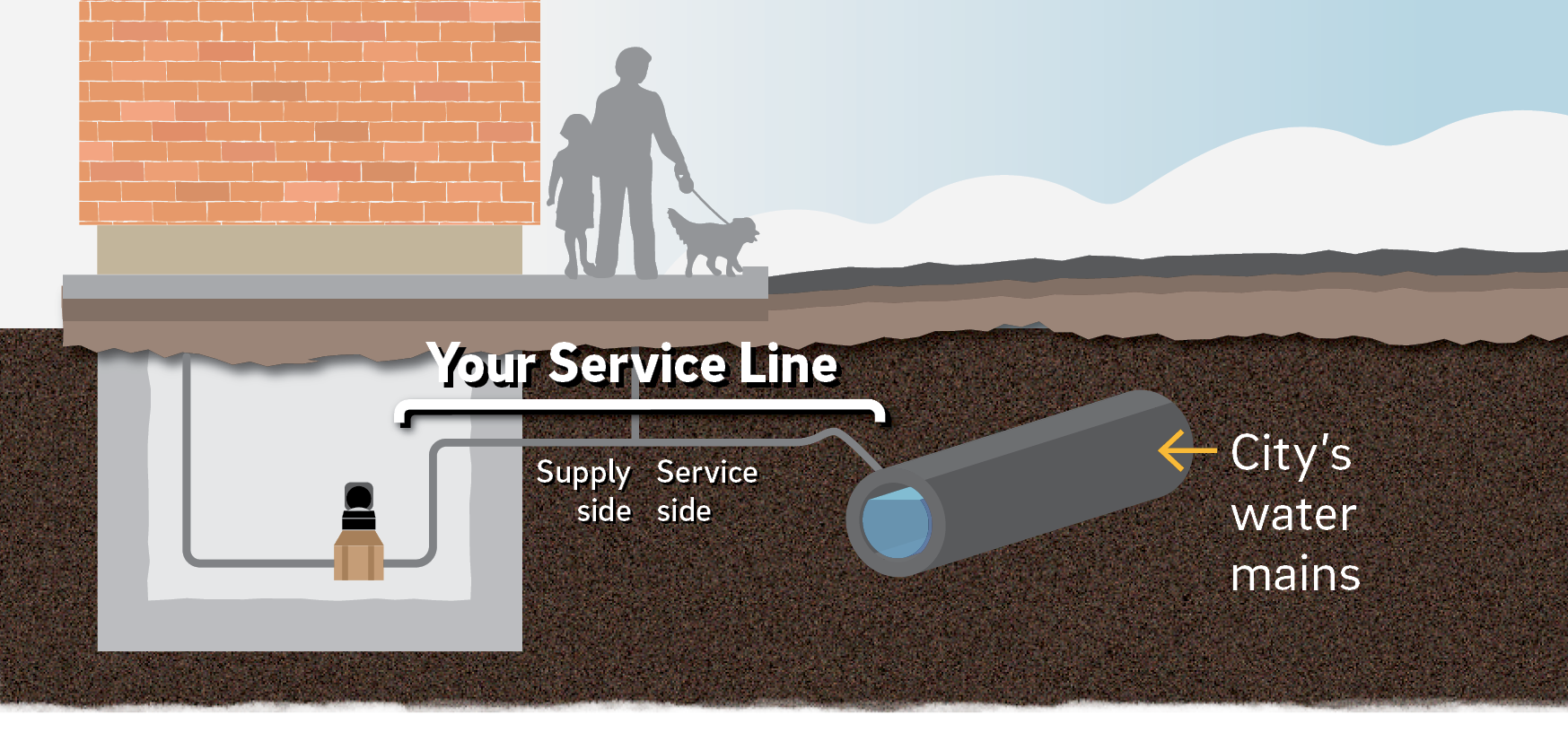
The service line is a part of your property’s plumbing, even though it’s underground.
If you own your property, the service line is your responsibility.
Flush your pipes
Run fast, cold water from a faucet for 3–5 minutes. This will flush out water that’s been sitting in your pipes.
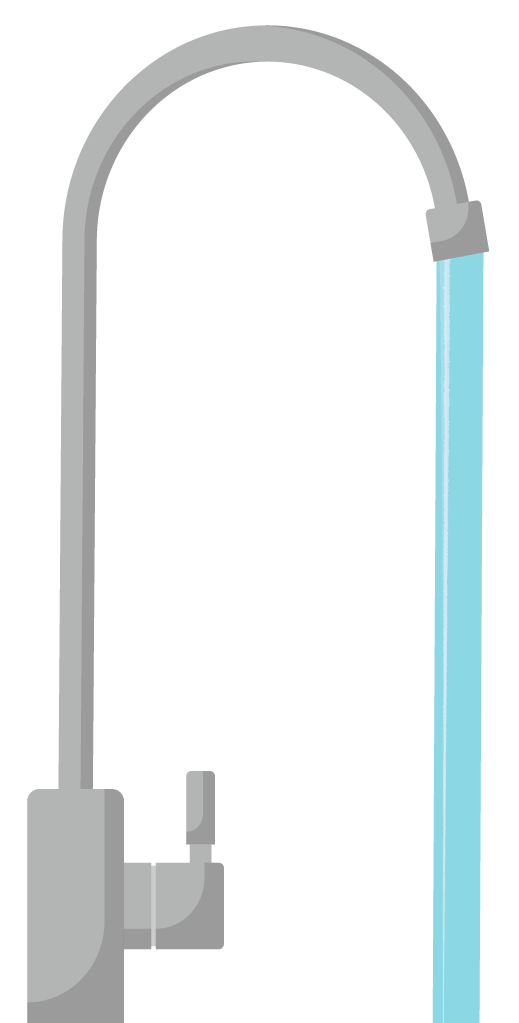
When to flush pipes: If you haven’t used water for 6 hours or more— usually first thing in the morning when you wake up or when you come home after work or school.
If your property has a lead service line: Flushing is important to do every day.
Cost: It costs only pennies (or less) per day!
How it works
Flushing pushes the water that is sitting in pipes out and down your drain until fresh water comes through the tap.
Fresh water starts at
our water mains.
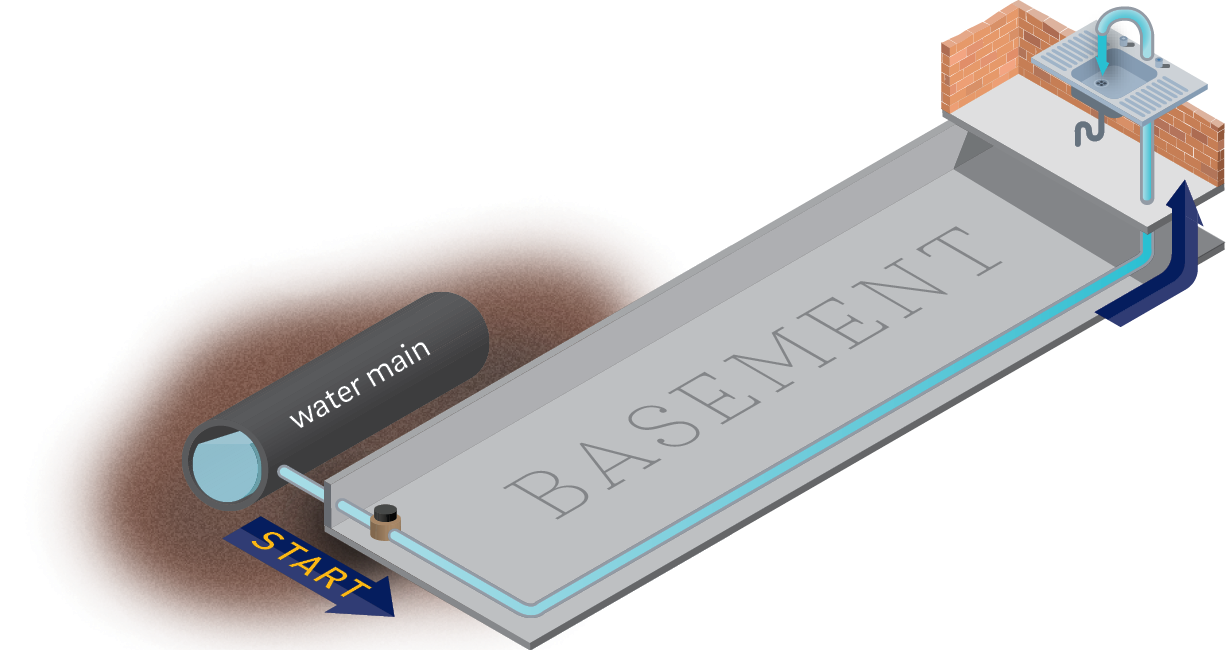
Running the tap gets rid of water sitting in pipes.
If lead is found in water, the source is somewhere in a property’s plumbing
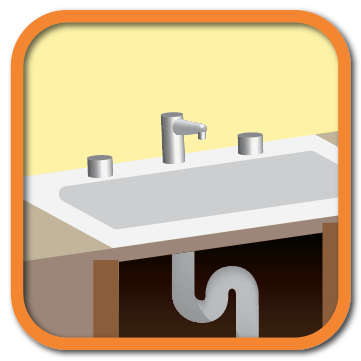
In a home’s older fixtures & valves:
Lead can also be in solder where pipes are joined.
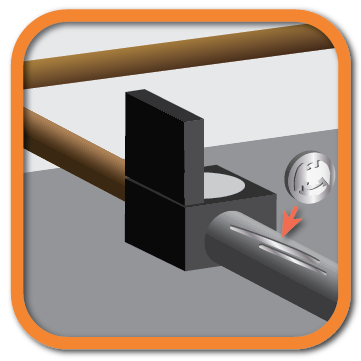
In a part of a service line:
This is one of the first places to look for lead.
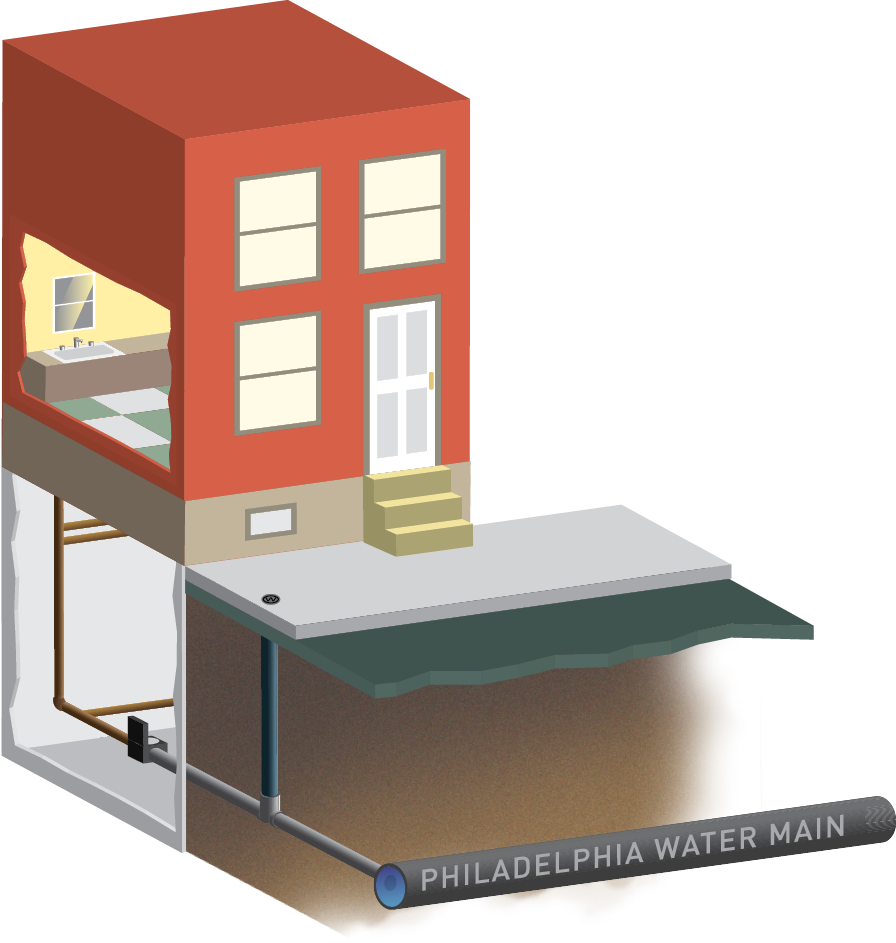
Age matters
Older fixtures and buildings are more likely to contain lead. Lead was used less after the 1950s, but fixtures and solder could still contain lead. Brass fixtures could contain lead until as late as 2014.
The good news?
We use Corrosion Control.
Zinc Orthophosphate, added during treatment, forms a protective coating on the inside of pipes.
For over 25 years, Philadelphia has successfully used this process to reduce the amount of lead that can dissolve from plumbing into water. However, different building plumbing systems and usage patterns can affect how well corrosion control works.
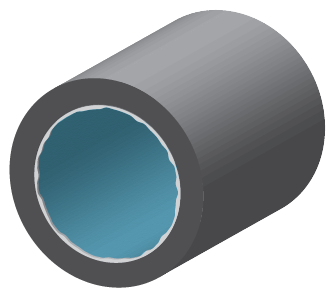
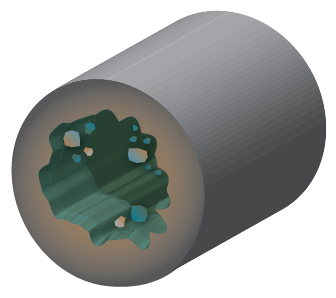
How do we know it works?
Tests at homes with lead plumbing show our treatment is working: corrosion control keeps lead levels below state and federal limits.
1 in 20
Estimated households with lead service lines in Philadelphia.
We have gathered a variety of sources for recent estimates, but this number is only an estimate. Further verification is needed.
Source: PWD Data
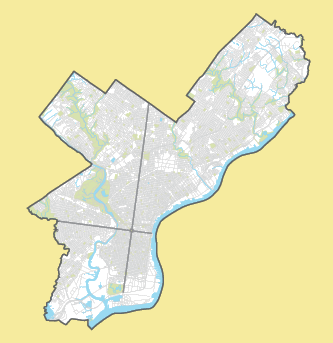
Sharing a map of service line materials for properties in Philadelphia.
We’re using data on service line materials collected during meter upgrade appointments. However, no materials identification method is 100% accurate. Further testing may be required to confirm the materials of the entire length of a service line.
IT’S THE LAW: We’re required by regulations to offer this information to the public.

We offer a zero-interest loan for replacing lead service lines.
The Homeowners Emergency Loan Program (HELP) can cover the cost of a replacement.
⮞ Learn more & apply: www.phila.gov/water/helploan
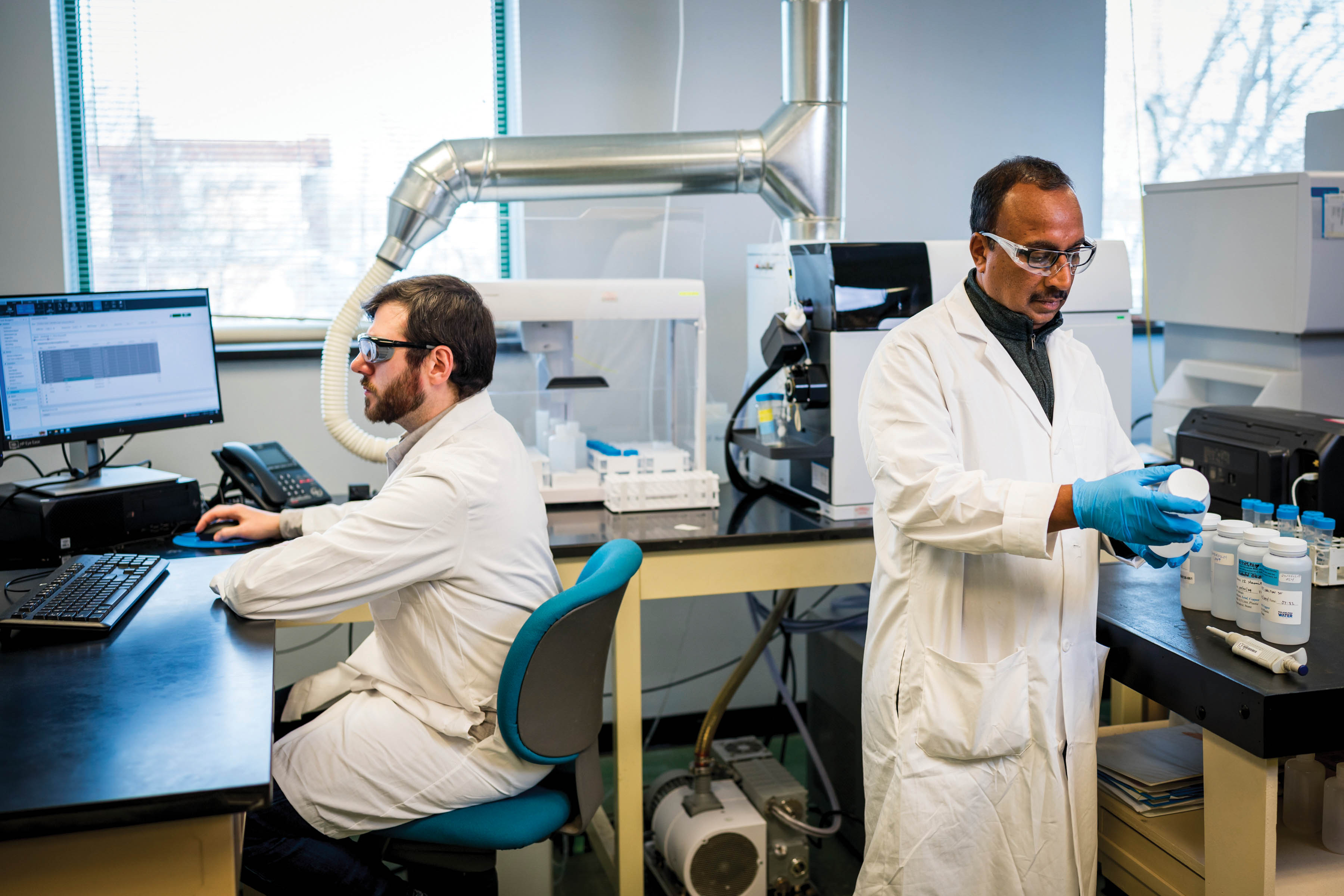
Scientists in our labs analyze water samples collected in homes throughout Philadelphia.
A Closer Look 
Carefully Monitoring Lead
In addition to regular tests in customer homes, we also perform rounds of sampling for lead and copper regulations.
We share the results with the EPA and the public.
The Environmental Protection Agency (EPA) requires that 90% of homes show lead levels less than 15 ppb.
Most recent results
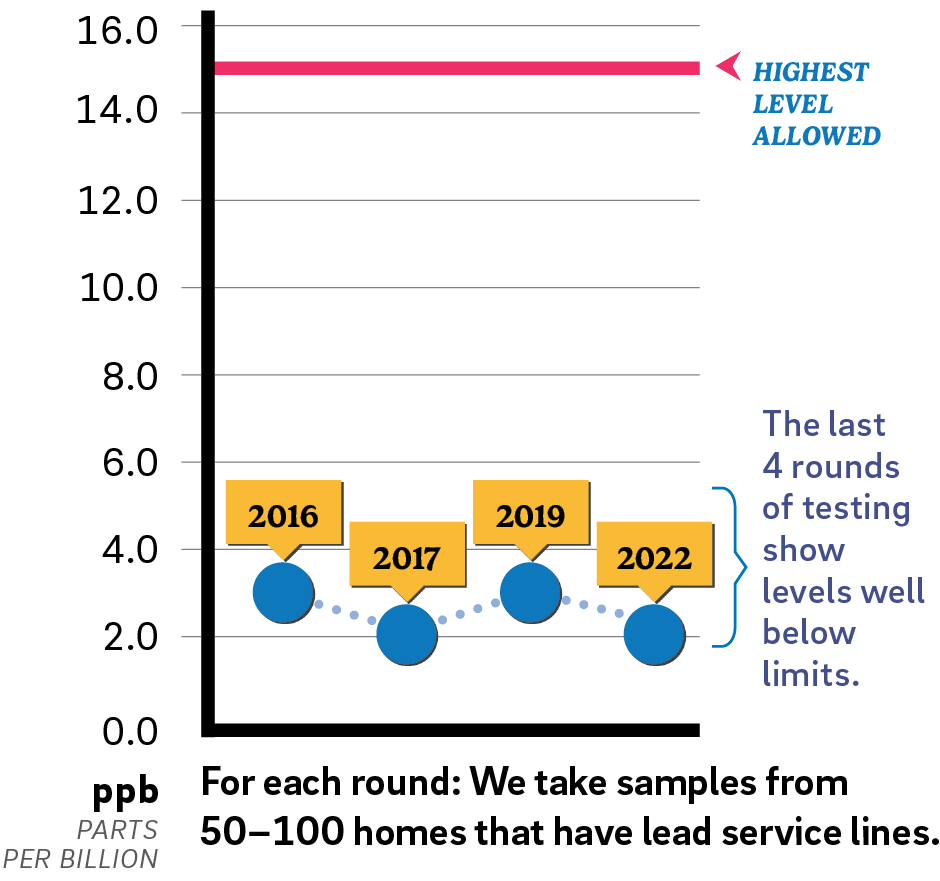
What this means for you
New guidelines will require more sampling and stricter limits. PWD expects to meet new requirements. We’re increasing our efforts to help keep lead out of drinking water.
☑Result:
Lead levels are consistently lower than limits set by the EPA.
US EPA Guidance
The EPA requires public water providers like the Philadelphia Water Department to monitor drinking water for lead at customer taps. If lead levels are higher than 15 parts per billion (ppb) in more than 10% of taps sampled, water providers must inform customers and take steps to reduce lead in water.
If present, elevated levels of lead can cause serious health problems, especially for pregnant women and young children. Lead in drinking water is primarily from material and components associated with service lines and home plumbing.
The Philadelphia Water Department is responsible for providing safe drinking water but cannot control the variety of materials used in plumbing components. If you haven’t turned on your tap for several hours, you can minimize the potential for lead exposure by flushing your tap before using water for drinking and cooking. If you are concerned about lead in your water, you may wish to have your water tested. Information on lead in drinking water, testing methods, and steps you can take to minimize exposure is available from the Safe Drinking Water Hotline (800) 426-4791 or at: www.epa.gov/safewater/lead.
+
2023 Data tables & more
An introduction to the results
All of PWD’s results are better than the required and recommended federal levels designed to protect public health.
This data shows how our process keeps your drinking water safe.
By reporting these results in these tables, we are meeting a requirement of the EPA.
Some contaminants may pose a health risk at certain levels to people with special health concerns. Others are used as indicators for treatment plant performance.
PPM vs. PPB vs. PPT
Many of these results are reported as “parts per million (ppm)” or “parts per billion (ppb)”.
ppm (parts per million):
Denotes 1 part per 1,000,000 parts, which is equivalent to two-thirds of a gallon in an Olympic-sized swimming pool.

ppb (parts per billion):
Denotes 1 part per 1,000,000,000 parts, which is equivalent to half a teaspoon in an Olympic-sized swimming pool.
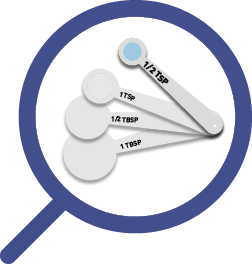
ppt (parts per trillion):
Denotes 1 part per 1,000,000,000,000 parts, which is equivalent to one drop in 20 Olympic-sized swimming pools.
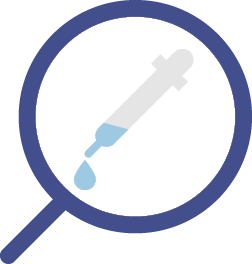
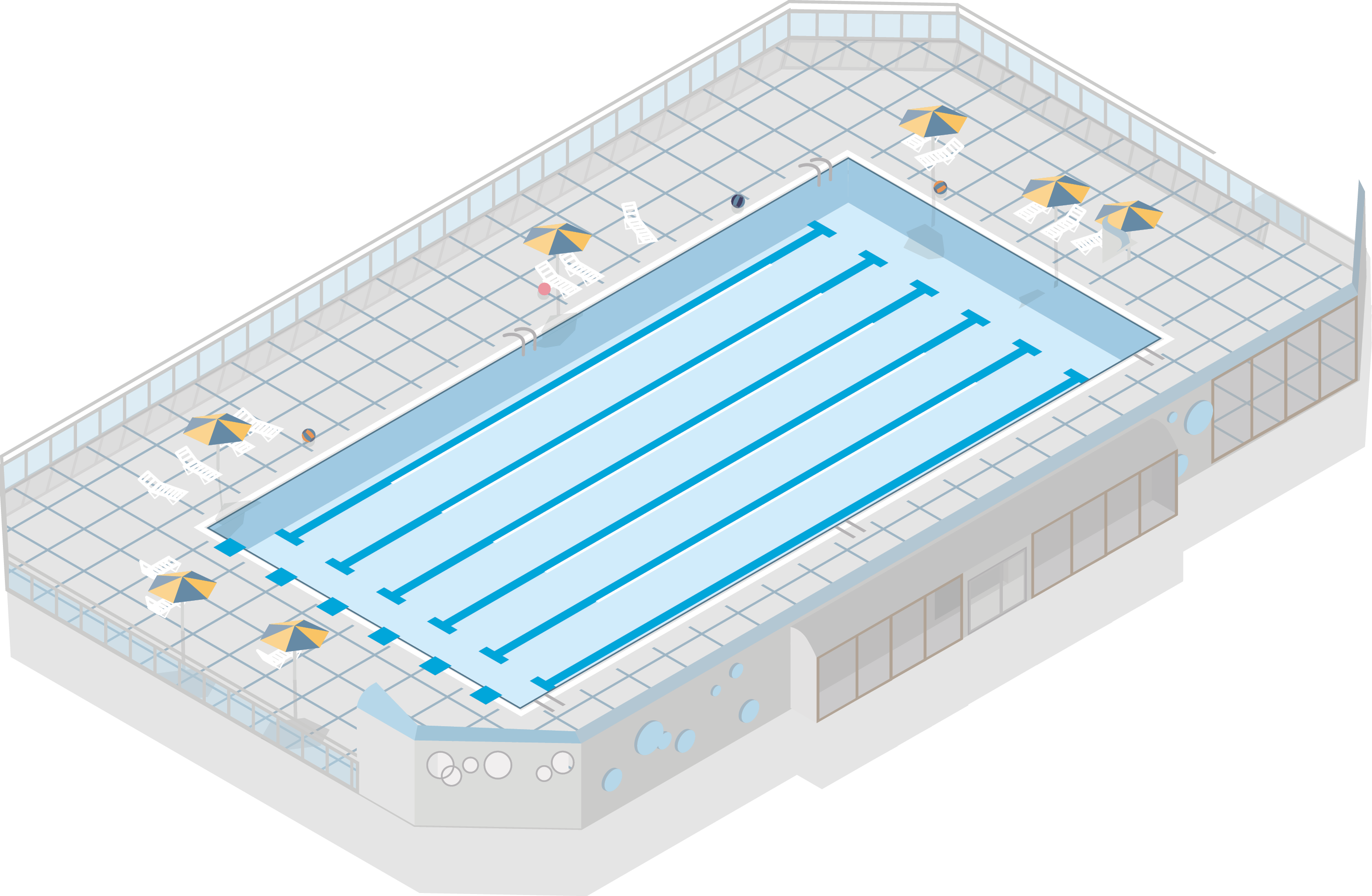
Illustration: GoodStudio / Shutterstock.com, and Philadelphia Water Department
Glossary
Here are definitions for some words and phrases we use in the report and in our data tables.
- Action Level: The concentration of a contaminant which, if exceeded, triggers treatment or other requirements that a water system must follow. The action level is not based on one sample; instead, it is based on many samples.
- Alkalinity: A measure of the water’s ability to resist changes in the pH level and a good indicator of overall water quality. Although there is no health risk from alkalinity, we monitor it to check our treatment processes.
- E. coli (Escherichia coli): A type of coliform bacteria that is associated with human and animal fecal waste.
- gpg (grains per gallon): A unit of water hardness. One grain per gallon is equal to 17.1 parts per million.
- MCL (Maximum Contaminant Level): The highest level of a contaminant that is allowed in drinking water. MCLs are set as close to the MCLGs as feasible using the best available treatment technology.
- MCLG (Maximum Contaminant Level Goal): The level of a contaminant in drinking water below which there is no known or expected risk to health. MCLGs allow for a margin of safety.
- mg/L (Milligrams per liter): One milligram per liter is equal to one part per million.
- MRDL (Maximum Residual Disinfection Level): The highest level of disinfectant that is allowed in drinking water. The addition of a disinfectant is necessary for the control of microbial contaminants.
- MRDLG (Maximum Residual Disinfection Level Goal): The level of a disinfectant in drinking water below which there is no known or expected risk to health. MRDLGs do not reflect the benefits of the use of disinfectants to control microbial contaminants.
- Minimum Residual Disinfectant Level: The minimum level of residual disinfectant required at the entry point to the distribution system.
- NTU (nephelometric turbidity units): Turbidity is measured with an instrument called a nephelometer. Measurements are given in nephelometric turbidity units.
- Pathogens: Bacteria, virus, or other microorganisms that can cause disease.
- pCi/L (Picocuries per liter): A measure of radioactivity.
- ppm (parts per million): Denotes 1 part per 1,000,000 parts, which is equivalent to two thirds of a gallon in an Olympic-sized swimming pool.
- ppb (parts per billion): Denotes 1 part per 1,000,000,000 parts, which is equivalent to half a teaspoon in an Olympic-sized swimming pool.
- ppt (parts per trillion): Denotes 1 part per 1,000,000,000,000 parts, which is equivalent to one drop in 20 Olympic-sized swimming pools.
- Service Line: The pipe that brings water from the water main into your home or business.
- SMCL (Secondary Maximum Contaminant Level): Non-enforcable Federal water quality guidelines that are established for managing aesthetic and cosmetic conditions of water (e.g. taste, odor, color).
- SOC (Synthetic Organic Chemical): Commercially made organic compounds, such as pesticides and herbicides.
- Total Coliform: Coliforms are bacteria that are naturally present in the environment. Their presence in drinking water may indicate that other potentially harmful bacteria are also present.
- THAAs (Total Haloacetic Acids): A group of chemicals known as disinfection byproducts. These form when a disinfectant reacts with naturally occurring organic and inorganic matter in the water.
- TOC (Total Organic Carbon): A measure of the carbon content of organic matter. This measure is used to indicate the amount of organic material in the water that could potentially react with a disinfectant to form disinfection byproducts.
- TTHMs (Total Trihalomethanes): A group of chemicals known as disinfection byproducts. These form when a disinfectant reacts with naturally occurring organic and inorganic matter in the water.
- Treatment Technique: A required process intended to reduce the level of a contaminant in drinking water.
- Turbidity: A measure of the clarity of water related to its particle content. Turbidity serves as an indicator for the effectiveness of the water treatment process. Low turbidity measurements, such as ours, show the significant removal of particles that are much smaller than can be seen by the naked eye.
- VOC (Volatile Organic Chemicals): Organic chemicals that can be either man-made or naturally occurring. These include gases and volatile liquids.
- WTP: Water Treatment Plant
- μg/L (Microgram per liter): One microgram per liter is equal to one part per billion.
What we test for and how
Public drinking water systems monitor their treated drinking water for approximately 100 regulated contaminants. These regulatory parameters are defined within federal rules, such as the Revised Total Coliform Rule, Surface Water Treatment Rule, Disinfectants and Disinfection Byproducts Rules, Lead and Copper Rule, and the Radionuclides Rule.
We monitor for the regulated parameters listed below.
Any contaminants found are noted in the tables on the following pages.
Inorganic Chemicals
- Antimony
- Arsenic
- Barium
- Beryllium
- Cadmium
- Chromium
- Copper
- Cyanide
- Fluoride
- Lead
- Mercury
- Nickel
- Nitrate
- Nitrite
- Selenium
- Thallium
Synthetic Organic Chemicals
- 2,3,7,8 – TCDD (Dioxin)
- 2,4 – D, 2,4,5 – TP (Silvex)
- Alachlor
- Atrazine
- Benzopyrene
- Carbofuran
- Chlordane
- Dalapon
- Di(ethylhexyl) adipate
- Di(ethylhexyl) phthalate
- Dibromochloropropane
- Dinoseb
- Diquat
- Endothall
- Endrin
- Ethylene Dibromide
- Glyphosate
- Heptachlor
- Heptachlor epoxide
- Hexachlorobenzene
- Hexachlorocyclopentadiene
- Lindane
- Methoxychlor
- Oxamyl
- PCBs Total
- Pentachlorophenol
- Picloram
- Simazine
- Toxaphene
Volatile Organic Chemicals
- Benzene
- Carbon Tetrachloride
- 1,2-Dichloroethane
- o-Dichlorobenzene
- p-Dichlorobenzene
- 1,1-Dichloroethylene
- cis-1,2-Dichloroethylene
- trans-1,2-Dichloroethylene
- Dichloromethane
- 1,2-Dichloropropane
- Ethylbenzene
- Monochlorobenzene
- Styrene
- Tetrachloroethylene
- Toluene
- 1,2,4-Trichlorobenzene
- 1,11-Trichloroethane
- 1,1,2-Trichloroethane
- Trichloroethylene
- o-Xylene
- m,p-Xylenes
- Vinyl Chloride
Radiological Contaminants
- Uranium
- Alpha Emitters
- Radium 226
- Radium 228
Other factors that can impact drinking water
Appealing to Your Senses

We work to ensure your water looks, tastes and smells the way it should.

To meet all water quality taste and odor guidelines, we test for the following: alkalinity, aluminum, chloride, color, hardness, iron, manganese, odor, pH, silver, sodium, sulfate, surfactants, total dissolved solids, turbidity, and zinc.
Temperature and Cloudiness
The temperature of the Schuylkill and Delaware Rivers varied seasonally in 2023 from approximately 37°–90° Fahrenheit. PWD does not treat the water for temperature.

Cloudiness in tap water most commonly happens in the winter, when the cold water from the water main is warmed up quickly in household plumbing. Cold water and water under pressure can hold more air than warmer water and water open to the atmosphere.
When really cold winter water comes out of your tap, it’s simultaneously warming up and being relieved of the pressure it was under inside the water main and in your plumbing. The milky white color is actually just tiny air bubbles. If you allow the glass to sit undisturbed for a few minutes, you will see it clear up gradually.
2023 Data tables
Lead & Copper– Tested at customers’ taps: Testing is done every 3 years. Most recent tests were done in 2022. | ||||||
|---|---|---|---|---|---|---|
| EPA’s Action Level – for a representative sampling of customer homes | Ideal Goal (EPA’s MCLG) | 90% of PWD customers’ homes were less than | Number of homes considered to have elevated levels | Violation | Source | |
| Lead | 90% of homes must test less than 15 ppb | 0 ppb | 2.0 ppb | 3 out of 104 | No | Corrosion of household plumbing; Erosion of natural deposits |
| Copper | 90% of homes must test less than 1.3 ppm | 1.3 ppm | 0.219 ppm | 0 out of 104 | No | Corrosion of household plumbing; Erosion of natural deposits; Leaching from wood preservatives |
Inorganic Chemicals (IOC)– PWD monitors for IOC more often than required by EPA. | ||||||
|---|---|---|---|---|---|---|
| Chemical | Highest Level Allowed (EPA’s MCL) | Ideal Goal (EPA’s MCLG) | Highest result | Range of Test Results for the Year | Violation | Source |
| Barium | 2 ppm | 2 ppm | 0.047 ppm | 0.024–0.047 ppm | No | Discharges of drilling wastes; Discharge from metal refineries; Erosion of natural deposits |
| Chromium | 100 ppb | 100 ppb | 2 ppb | 0–2 ppb | No | Discharge from steel and pulp mills; Erosion of natural deposits |
| Fluoride | 2 ppm* | 2 ppm* | 0.83 ppm | 0.66–0.83 ppm | No | Erosion of natural deposits; Water additive which promotes strong teeth; Discharge from fertilizer and aluminum factories |
| Nitrate | 10 ppm | 10 ppm | 3.82 ppm | 0.69–3.82 ppm | No | Runoff from fertilizer use; Leaching from septic tanks; Erosion of natural deposits |
| ||||||
Radiological Contaminants | ||||||
|---|---|---|---|---|---|---|
| Highest Level Allowed (EPA’s MCL) | Ideal Goal (EPA’s MCLG) | Highest result | Range of Test Results for the Year | Violation | Source | |
| Alpha Emitters | 15 pCi/L | 0 pCi/L | 5.32 pCi/L | 0–5.32 pCi/L | No | Erosion of natural deposits |
Total Chlorine Residual– Continuously monitored at Water Treatment Plants | |||||
|---|---|---|---|---|---|
| Sample Location | Minimum Disinfectant Residual Level Allowed | Lowest Level Detected | Yearly Range | Violation | Source |
| Baxter WTP | 0.2 ppm | 2.30 ppm | 2.30–3.40 ppm | No | Water additive used to control microbes |
| Belmont WTP | 1.86 ppm | 1.86–2.71 ppm | |||
| Queen Lane WTP | 1.97 ppm | 1.97–3.53 ppm | |||
Total Chlorine Residual– Tested throughout the Distribution System.Over 360 samples collected throughout the City every month. | |||||
|---|---|---|---|---|---|
| Sample Location | Maximum Disinfectant Residual Allowed | Highest Monthly Average | Monthly Average Range | Violation | Source |
| Distribution System | 4.0 ppm | 2.60 ppm | 1.93–2.60 ppm | No | Water additive used to control microbes |
Bacteria in Tap Water– Tested throughout the Distribution System.Over 400 samples collected throughout the City every month. | ||||||
|---|---|---|---|---|---|---|
| Highest Level Allowed (EPA’s MCL) | Ideal Goal (EPA’s MCLG) | Highest Monthly % or Yearly Total of Positive Samples | Monthly Range (% of Samples) | Violation | Source | |
| Total Coliform | No more than 5% of samples can test positive in a single month* | 0 | 0.6% | 0%–0.6% | No | Naturally present in the environment |
| E. coli | 0 | 0% | 0% | No | Human or animal fecal waste. | |
| ||||||
Total Organic Carbon– Tested at Water Treatment Plants | |||||
|---|---|---|---|---|---|
| Treatment Technique Requirement | Baxter WTP One Year Average | Belmont WTP One Year Average | Queen Lane WTP One Year Average | Violation | Source |
| Percent of Removal Required | 25–45% | 25–45% | 25–45% | n/a | Naturally present in the environment |
| Percent of Removal Achieved* | 17–72% | 20–74% | 33–71% | No | |
| Number of Quarters out of Compliance* | 0 | 0 | 0 | ||
| |||||
Turbidity, a measure of clarity– Tested at Water Treatment Plants | |||||
|---|---|---|---|---|---|
| Baxter WTP One Year Average | Belmont WTP One Year Average | Queen Lane WTP One Year Average | Violation | Source | |
| Treatment Technique Requirement: 95% of samples must be at or below 0.300 NTU | 100% below 0.300 NTU | 100% below 0.300 NTU | 100% below 0.300 NTU | n/a | Soil runoff, river sediment |
| Highest single value for the year | 0.099 NTU | 0.180 NTU | 0.153 NTU | No | |
| Yearly Average | 0.058 NTU | 0.049 NTU | 0.028 NTU | ||
We are required to monitor your drinking water for specific contaminants on a regular basis. The results of this monitoring indicate whether or not your drinking water meets health standards. PWD continuously operates and monitors water quality from a total of 160 filters at three drinking water treatment plants. In calendar year 2023, on one occasion, continuous on-line turbidity monitoring was interrupted on one of our filters and therefore we cannot be sure of the quality of the drinking water from this filter during the interruption. On June 4th, 2023, Filter #2 at the Queen Lane Plant was found in service without turbidity monitoring for a period of 62.5 hours. The monitoring interruption was a result of a software upgrade on the turbidimeter controller that left the turbidimeter in hold mode, creating an artificial steady turbidity reading, until operators recognized the data trend was not responding on June 4th, 2023. During this single filter monitoring interruption, the combination flow from the plant filters at Queen Lane Plant was continuously sampled and monitored with no change in turbidity levels. The software upgrade issue on the turbidimeter controller was later resolved by the manufacturer. No water quality emergency occurred due to the monitoring interruption, and this notice is for informational purposes only. | |||||
Disinfection Byproducts | |||||
|---|---|---|---|---|---|
| Highest Level Allowed (EPA’s MCL) – One Year Average | Running Annual Average 2023* | System Wide Range of Resulsts | Violation | Source | |
| Total Trihalomethanes (TTHMs) | 80 ppb | 52 ppb | 17–91ppb | No | Byproduct of drinking water disinfection |
| Total Haloacetic Acids (THAAs) | 60 ppb | 42 ppb | 16–63 ppb | No | Byproduct of drinking water disinfection |
| |||||
Unregulated Contaminant Monitoring (UCMR)1 | |||
|---|---|---|---|
| Chemical | Testing Period | Average | Range |
| Bromide2 | 1/14/2020 | 0.034 ppm | 0–0.052 ppm |
| Total Organic Carbon (TOC) | 1/14/2020 | 2.27 ppm | 2.19–2.34 ppm |
| HAA5 Total3 | 1/14/2020 | 21.3 ppb | 14.8–31.3 ppb |
| HAA6BR Total4 | 1/14/2020 | 7.1 ppb | 3.8–10.3 ppb |
| HAA9 Total | 1/14/2020 | 28.2 ppb | 23.6–35.5 ppb |
| Manganese | 1/15/2020 | 0.55 ppb | 0–0.95 ppb |
In 2020, PWD performed special monitoring as part of the Unregulated Contaminant Monitoring Rule (UCMR), a nationwide monitoring effort conducted by the EPA. Unregulated contaminants are those that do not yet have a drinking water standard set by the EPA. The purpose of monitoring for these contaminants is to help the EPA decide whether the contaminants should have a standard. For more information concerning UCMR, visit these websites: https://www.epa.gov/dwucmr/fourth-unregulated-contaminant-monitoring-rule or https://drinktap.org/Water-Info/Whats-in-My-Water/Unregulated-Contaminant-Monitoring-Rule-UCMR | |||
Unregulated contaminants not detected at any of the sampling locations: |
|---|
| 1-Butanol, 2-Methoxyethanol, 2-Propen-1-ol, alpha-Hexachlorocyclohexane, anatoxin-a, Butylated Hydroxyanisole, Chlorpyrifos, Cylindrospermopsin, Dimethipin, Ethoprop, Germanium, Microcystin Total, Nodularin, o-Toluidine, Oxyfluorfen, Permethrin Total, Profenofos, Quinoline, Tebuconazole, Tribufos |
Secondary Chemicals
EPA has established National Secondary Drinking Water Regulations (NSDWRs) that set non-mandatory water quality standards. EPA does not enforce these “secondary maximum contaminant levels” (SMCLs). They are established as guidelines to assist public water systems in managing their drinking water for aesthetic considerations, such as taste, color, and odor. These contaminants are not considered to present a risk to human health at the SMCL.
Secondary MCLs: Aesthetic Impacts in Tap Water | ||||||
|---|---|---|---|---|---|---|
| Chemical | EPA’s SMCL | Baxter WTP One Year Range | Belmont WTP One Year Range | Queen Lane WTP One Year Range | Violation* | Source |
| Chloride | 250 ppm | 53–66 ppm | 58–109 ppm | 54–115 ppm | No | Main component of many salts, may increase in winter months; Erosion of natural minerals; Used in the water treatment process in the form of ferric chloride. |
| Copper | 1.0 ppm | 0.098–0.218 ppm | 0.004–0.026 ppm | 0.022–0.037 ppm | No | Corrosion of coper pipes in premise plumbing; Erosion of natural deposits. |
| Fluoride | 2 ppm** | 0.66 ppm | 0.83 ppm | 0.73 ppm | No | Erosion of natural deposits; Water additive that promotes strong teeth; Discharge from fertilizer and aluminum factories. |
| Iron | 0.3 ppm | 0 ppm | 0–0.012 ppm | 0–0.010 ppm | No | Corrosion of iron water mains and premise plumbing; Erosion of natural minerals; Used in the water treatment process in the form of ferric chloride. |
| pH | 6.5-8.5 | 7.05–7.25 | 7.1–7.3 | 7.08–7.24 | No | Adjusted during the water treatment process. |
| Sulfate | 250 ppm | 8.32–28.9 ppm | 20.30–55.40 ppm | 10.90–89.90 ppm | No | Erosion of natural minerals; Runoff from mining operations. |
| Total Dissolved Solids | 500 ppm | 128–242 ppm | 200–374 ppm | 194–396 ppm | No | Erosion of natural minerals; May increase during winter months due to road salt runoff or during drought conditions. |
PWD also monitored for Aluminum, Color, Manganese, and Silver in 2022; all results were below respective parameter detection limits.
| ||||||
| Sources of Secondary Chemicals | |
|---|---|
| Chloride | Main component of many salts, may increase in winter months; Erosion of natural minerals; Used in the water treatment process in the form of ferric chloride. |
| Copper | Corrosion of coper pipes in premise plumbing; Erosion of natural deposits. |
| Fluoride | Erosion of natural deposits; Water additive that promotes strong teeth; Discharge from fertilizer and aluminum factories. |
| Iron | Corrosion of iron water mains and premise plumbing; Erosion of natural minerals; Used in the water treatment process in the form of ferric chloride. |
| pH | Adjusted during the water treatment process. |
| Sulfate | Erosion of natural minerals; Runoff from mining operations. |
| Total Dissolved Solids | Erosion of natural minerals; May increase during winter months due to road salt runoff or during drought conditions. |
Sodium, Hardness, and Alkalinity in tap water
The parameters listed below are not part of EPA’s requirements and are provided for information purposes.
Sodium in Tap Water | |||
|---|---|---|---|
| Baxter WTP One Year Average | Belmont WTP One Year Average | Queen Lane WTP One Year Average | |
| Average (ppm) | 21 ppm | 42 ppm | 34 ppm |
| Average (mg in 8 oz. glass of water) | 5 mg | 10 mg | 8 mg |
| Range (ppm) | 16–26 ppm | 29–55 ppm | 19–46 ppm |
| Range (mg in 8 oz. glass of water) | 4–6 mg | 7–13 mg | 5–11 mg |
Hardness in Tap Water | |||
|---|---|---|---|
| Baxter WTP One Year Average | Belmont WTP One Year Average | Queen Lane WTP One Year Average | |
| Average | 90 ppm or 5 gpg | 136 ppm or 8 gpg | 154 ppm or 9 gpg |
| Minimum | 78 ppm or 5 gpg | 109 ppm or 6 gpg | 82 ppm or 5 gpg |
| Maximum | 105 ppm or 6 gpg | 180 ppm or 11 gpg | 206 ppm or 12 gpg |
| Hardness defines the quantity of minerals, such as calcium and magnesium, in water. These minerals react with soap to form insoluble precipitates and can affect common household chores such as cooking and washing. Philadelphia’s water is considered “moderately hard” or “hard” depending on your service area. | |||
Alkalinity in Tap Water | |||
|---|---|---|---|
| Baxter WTP One Year Average | Belmont WTP One Year Average | Queen Lane WTP One Year Average | |
| Average | 38 ppm | 70 ppm | 68 ppm |
| Minimum | 26 ppm | 52 ppm | 33 ppm |
| Maximum | 50 ppm | 88 ppm | 94 ppm |
Top Customer Questions
How do I get my water tested?
We offer free lead and copper tests for residential customers who have concerns about their water.
To request an appointment Call (215) 685-6300
Why do water utilities add fluoride to water?
It’s a natural element that helps prevent cavities. Philadelphia’s Health Department (and dentists) recommend that we add fluoride to a level that helps protect children’s teeth.
How hard is Philadelphia’s water?
Philadelphia’s water is considered moderately hard. Hardness depends on the treatment plant that serves your area of the city.
See results in the Hardness data table
Can I replace a lead service line?
Yes. If you don’t want to contact a plumber directly, apply for our Homeowners Emergency Loan Program (HELP).
A zero-interest loan can cover the cost of replacement.
Learn more & apply water.phila.gov/help
Also: PWD will replace lead service lines for free if they are discovered during planned work on water mains.
Why does water have an earthy flavor sometimes?
Earthy or musty flavors occur naturally in drinking water and are among the most commonly reported worldwide. When certain algae-type organisms grow in our rivers, detectable levels of these odors can make their way into the treated drinking water.
These natural compounds have no known health effects at their natural levels, and are found in various foods.
We take steps to reduce their presence when detected.

Why does my tap water smell like a pool sometimes?
The smell of chlorine means your water is safe and treated to remove harmful organisms. You can reduce the smell by keeping a pitcher of fresh water in the refrigerator. This also reduces the earthy odor sometimes produced by algae in the rivers during spring.
Why does my water look cloudy sometimes?
This is usually not a water quality issue. Water pressure in the main creates air bubbles in water. When you fill a glass with tap water, the bubbles rise from the bottom of the glass and are released at the top.
Call us to report a water quality issue if the bubbles don’t disappear after a few seconds.
Call (215) 685-6300
Should I use a filter?
The water we deliver to your property does not need a filter. Your plumbing can impact your water quality, especially when service lines are disturbed. This can happen during construction or repairs near your property. If you use a filter, you must follow all instructions from the manufacturer. It should be certified for lead reduction by the National Sanitation Foundation (NSF).
Working together
You can help protect Philadelphia’s water quality.
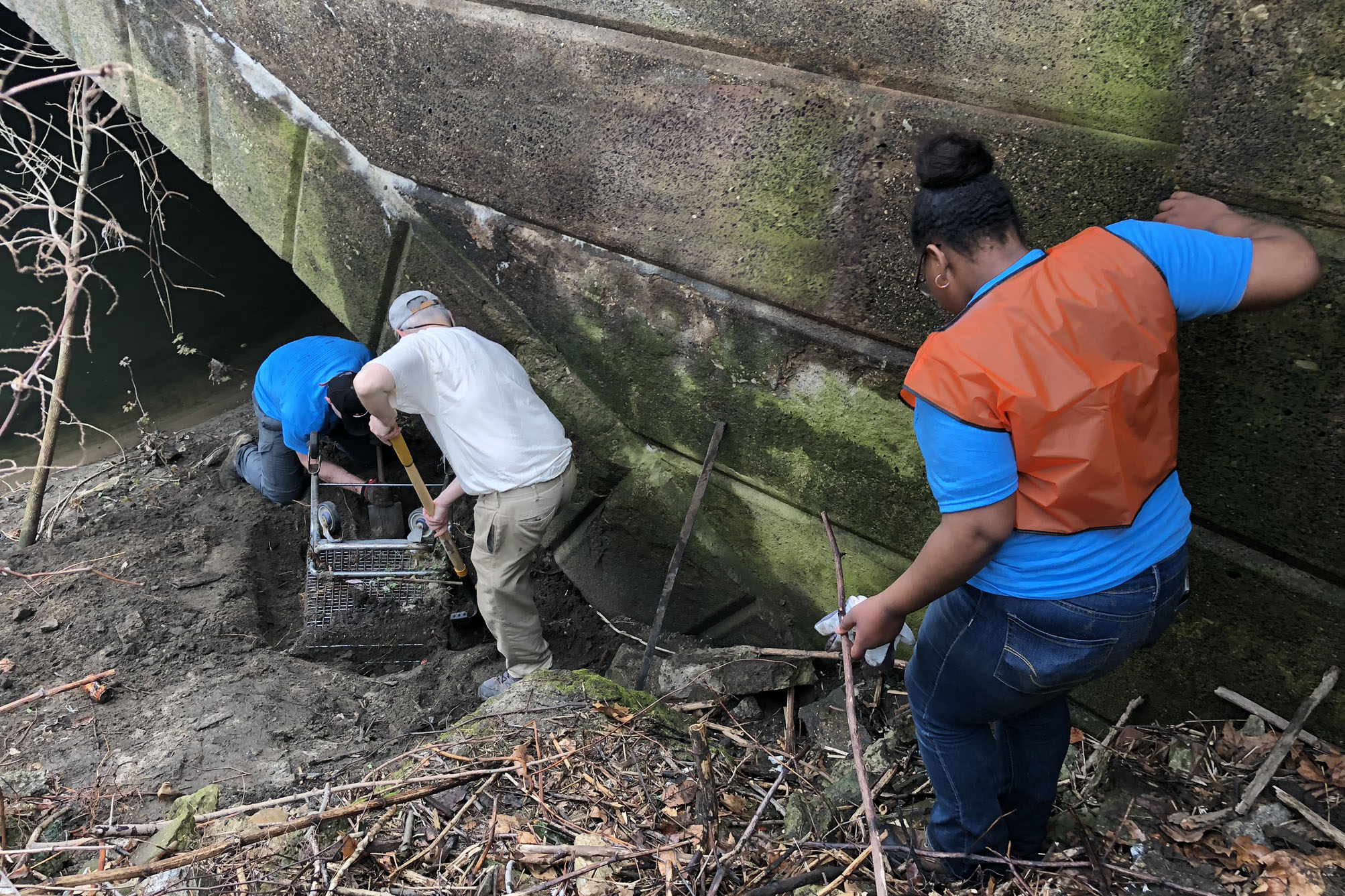
Join a cleanup.
Group cleanups help remove trash and litter from our waterways. There are a number of ways to stay informed about upcoming cleanups: visit the @PhillyH2O blog (water.phila.gov/blog), follow us on social media (@phillyh2o), email us at waterinfo@phila.gov, or call us at (215) 685-6300.
Keep trash out of our waterways.
Make sure to put your recyclable paper, metal, and plastics in a recycling bin. Put disposable gloves, masks, food waste, and other garbage in a trash can, so they don’t end up in our rivers and streams.

Take a tour.
Tour a water treatment plant to learn more about how we test and treat our water, or visit Green Stormwater Infrastructure (GSI) sites to learn how Philadelphia is using GSI to keep our water cleaner and make our city greener. To schedule a tour, email waterinfo@phila.gov.
Always properly recycle or dispose of household hazardous wastes.
Don’t flush them down the toilet or down the sink, and don’t pour them into storm drains. Many storm drains flow directly to our streams and rivers.

Visit the Fairmount Water Works Interpretive Center.
The Fairmount Water Works Interpretive Center is a great resource for educational programming and information. Topics include our water infrastructure and watersheds, local native wildlife, and STEAM (science, technology, engineering, arts, and math) activities. fairmountwaterworks.org
Don’t flush anything but toilet paper.
Yes, even “flushable” wipes! They don’t dissolve like toilet paper and can lead to clogs and backups, causing waste to flow into our homes and our streets.
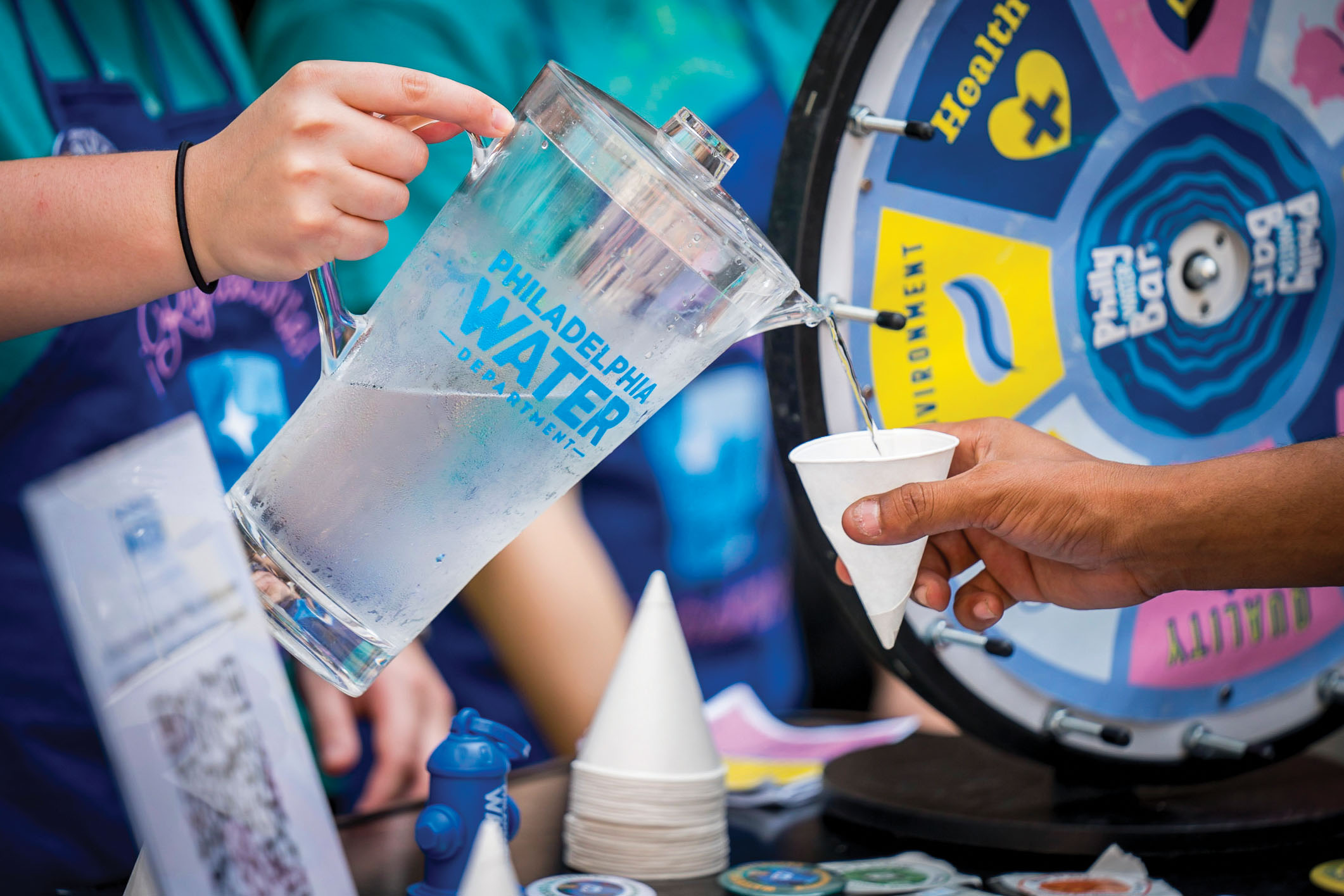
Enjoy top-quality tap at the Philly Water Bar.
The Philly Water Bar is a relationship-building tool and interactive platform that educates and engages the public around Philadelphia’s top-quality tap water. water.phila.gov/water-bar
Stay informed
Sign up to receive water quality updates and more!
Get the latest news, useful information, and find out about upcoming events.
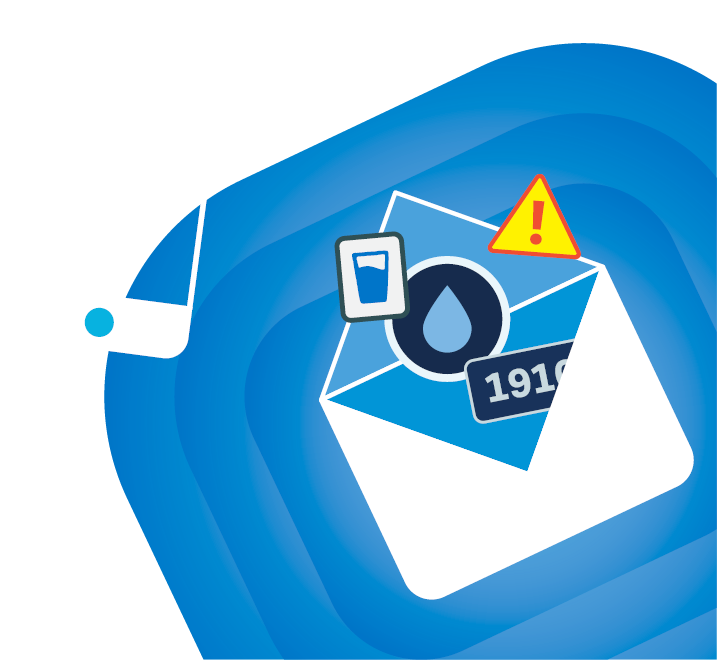
Organizations we partner with
- American Water Resources Association
- American Water Works Association
- Partnership for Safe Water
- American Public Works Association
- Association of Metropolitan Water Agencies
- National Association of Clean Water Agencies
- Partnership for the Delaware Estuary
- Schuylkill Action Network
- Schuylkill River Restoration Fund
- Tookany/Tacony-Frankford (TTF) Watershed Partnership
- U.S. Water Alliance
- Water Environment Federation
- Water Environment Research Foundation
- Water Research Foundation

Philadelphia Water Department
1101 Market Street
Philadelphia, PA 19107
(215) 685-6300
water.phila.gov
Photography
Sahar Coston-Hardy, Philadelphia Water Department, Veracity Studios
© Philadelphia Water Department

